Upcoming Summer 2024 Application Deadline is May 12, 2024.
Click here to apply.


Featured Posts

8 Great Research Opportunities in Mechanical Engineering for High School Students in 2024

How To Get Into MIT: 9 Insider Secrets From An MIT Alum

Summer Discovery at UCLA’s Anderson School of Management - Is It Worth It?

8 STEM Programs for Middle School Students

7 Coding Programs for High School Students

Applying to the Congress of Future Medical Leaders? Here Are 10 Tips to Help You Out

California State Summer School for the Arts (CSSSA) Should You Do It?

10 Free Engineering Programs for High School Students

10 Online Summer Programs for Middle School Students

Engineering Summer Academy at Penn (ESAP) - Our Review
10 Research Grants for High School Students
Applying for a research grant as a high school student will provide you with a unique and invaluable opportunity to elevate your independent research projects. Securing financial support not only gives you the necessary resources for conducting experiments, gathering data, and accessing specialized equipment, but it also validates the merit and potential impact of your work.
Grants offer a bridge between your passion and practicality, enabling you to pursue ambitious scientific inquiries that may otherwise be constrained by limited resources.
Applying for a research grant will empower you to transform your curiosity into tangible contributions to the scientific community, fostering a sense of accomplishment and paving the way for your future academic pursuits.
Here are 10 different research grants for high school students that you can make the best out of!
1. National Science Foundation: High School Student Research Assistantships
With the goal of broadening the participation of high school students who are in groups that have been traditionally underrepresented and under-served in STEM fields, the National Science Foundation’s High School Student Research Assistantships’s funding is designed to support and foster interest in the pursuit of studies in both the Mathematical and Physical Sciences.
The National Science Foundation hopes to also support students whose research will address modern and compelling scientific questions , as well as educate others on the future of an advanced high-tech workforce, and promote discoveries that will meet the needs of the Nation.
Comprised of six different Divisions - Astronomical Sciences (AST), Mathematical Sciences (DMS), Materials Research (DMR), Chemistry (CHE), and Physics (PHY), as well as the Office of Multidisciplinary Activities (OMA) - the National Science Foundation takes the position that diversity is a necessary component to achieving research excellence.
On their website, it states that to receive funding, your request must create an interest in the pursuit of studies in the Mathematical and Physical Sciences and enhance the participation of high school students who belong to groups that have been traditionally underrepresented and under-served in the science, technology, engineering and mathematics (STEM) fields.
Application Deadlines: Supplement requests can be made under an existing
NSF award or within a proposal for a new or renewal NSF award with rolling deadlines.
Grant Amount: Up to $6,000.
Eligibility: High school students.
2. American Chemical Society
The American Chemical Society provides grants for both high school and undergraduate students interested in the chemical sciences. ACS offers grants to support chapter activities, collaborative research projects, ACS meeting travel, and more. Designed to support and encourage budding scientists, these grants provide financial assistance for projects, research, and educational endeavors in the field of chemistry.
By awarding funds to high school students, the ACS aims to foster a passion for scientific inquiry, nurture talent, and facilitate access to resources that may otherwise be limited. This initiative not only empowers the next generation of chemists but also contributes to the advancement of scientific knowledge and innovation at the high school level.
Application Deadlines: Applications vary depending on which grant you prefer.
Grant Amount: Grant amount also varies, see here .
Eligibility: High school and undergraduate students.
3. National Institute of General Medical Sciences: Science Education Partnership Award
The National Institute of General Medical Sciences’ SEPA program backs educational initiatives promoting the engagement of pre-college students (from pre-kindergarten to 12th grade) from varied backgrounds, specifically targeting those underrepresented in the biomedical and behavioral sciences. Its goal is to inspire these students to pursue advanced studies in science, technology, engineering, and mathematics (STEM).
A SEPA project may focus on one or more of the following activities: Courses for Skills Development, Research Experiences, Mentoring Activities, Curriculum or Methods Development, and Outreach. The SEPA program strongly encourages submitted projects to utilize and display quantitative and computational skills.
SEPA funds two types of projects. The first being classroom-based projects for pre-college students and teachers. The second being informal science education (ISE) projects conducted in outside-the-classroom venues, such as science centers, museums and libraries. More information can be found here .
Application Deadlines: Rolling deadlines and acceptances.
Grant Amount: N/A.
4. Spencer Foundation’s Research Grants
The Spencer Foundation’s Small Research Grants Program supports research projects that work towards the improvement of education. This program is “field-initiated”, meaning proposal submissions do not have to respond to a specific request for a particular research topic, discipline, design, method, or location. The Spencer Foundation grants funds to research that is both technically sound, intellectually rigorous, and relevant to the most pressing questions and current problems in education.
Proposals to the Research Grants on Education program must be for academic research projects that aim to study education
Application Deadlines: Applications are due December 6, 2023.
Grant Amount: Up to $50,000.
5. National Science Foundation: Research Assistantships for High School Students
Research Assistantships for High School Students is a supplement for PIs (a researcher who oversees a lab) with an active grant from the Directorate for Biological Sciences and aims to foster interest in the pursuit of the biological sciences. This grant is generally less than $6,000 per student. The National Science Foundation recognizes that by supporting high school students’ research projects in the Biological Sciences, there will be a broader spectrum of future scientific research as those students go onto pursue a higher education.
To apply for this grant, much like the first grant from the National Science Foundation listed above, students must submit a research proposal that will foster their interest in the pursuit of studies in the Biological Sciences and help broaden participation of high school students, particularly those who are underrepresented in the STEM field.
Application Deadlines: There is no deadline, you must submit your desired start date and the duration of supplement.
Grant Amount: Up to $6,000
6. National Endowment Financial Education
The National Endowment for Financial Education (NEFE) is a champion in promoting financial well-being through its support of rigorous and innovative research. Committed to advancing the knowledge base of the financial education community, NEFE funds projects that delve into financial behaviors and contribute valuable insights. By emphasizing effective educational practices, NEFE plays a crucial role in enhancing financial literacy and empowering individuals to make informed financial decisions. NEFE awards research grants that have the potential to make a profound contribution to the field of financial literacy and seek to improve the public’s financial well-being.
Application Deadlines: You may apply year-round.
Grant Amount: Depends on the project.
Eligibility: Anyone, independently or with an organization.
7. The Alfred E. Friend, Jr., W4CF, Educational Activities Fund of the American Radio Relay League Foundation
The Alfred E. Friend, Jr., W4CF, Educational Activities Fund offers yearly grants to support educational initiatives organized by amateur radio groups, placing a particular emphasis on projects that engage youth and promote teacher development. Eligible projects should include activities and ongoing education related to wireless technology, science, technology, engineering, and mathematics (STEM), as well as radio technology. Priority, however, is given to applicants actively involved in local radio clubs and backed by community fundraising efforts. The American Radio Relay League (ARRL) Foundation oversees the administration of the fund and all organizations dedicated to the education, licensing, and advancement of amateur radio pursuits are invited to submit applications.
Application Deadlines: Accepted year round.
Grant Amount: Up to $3,000
8. Research in the Formation of Engineers (RFE)
The Research in the Formation of Engineers (or, RFE) program supports the study of the formal and informal educational process and its influence on how students become engineers. Proposals are accepted for research projects or design and development projects that work to advance knowledge on an engineering education. The objective of the RFE program is to enhance the comprehension of professional development. It aims to dive into the fundamental understanding of the processes and mechanisms that exist beneath the surface of engineering while also illustrating the ways in which professional formation can be achieved or is currently being accomplished.
Research proposals are particularly welcome in the following areas: Research that addresses lifelong learning by the engineering workforce, research on the impact of engineering education research, research that addresses culture change in engineering education, and more.
Application Deadlines: Year-round.
Grant Amount: Up to $350,000
9. Sigma Xi Grants-in-Aid of Research
Sigma Xi, The Scientific Research Honor Society, provides Grants-in-Aid of Research to support undergraduate and high school student research projects in various scientific disciplines. The grants cover research-related expenses, and as a student, you can apply for funding to support your independent research endeavors. Since 1922, the Sigma Xi Grants in Aid of Research (GIAR) program has provided students with valuable educational experiences. By encouraging mentorship between students and mentors, the program promotes scientific excellence and achievement through hands-on learning.
For Sigma Xi Members, award amounts range from $500 to $2,000 for undergraduate applicants. While for non-members, award amounts for non-members, both graduate and undergraduate, are available up to $1,000. Both members and non-members are eligible for designated funds
Application Deadlines: March 15th 2024.
Grant Amount: Up to $1,000 for non-members.
10. Society for Science STEM Research Grants
Society for Science’s STEM Research Grants offer assistance to middle and high school educators as they involve their students in scientific research projects. Preference is given to schools that cater to students from low-income backgrounds and demographics that are underrepresented in STEM fields. In the context of this program’s grants, a research project is characterized as a student's independent exploration that involves experimentation to address a scientific question or problem that falls beyond the scope of standard classroom activities.
Application Deadlines: October 2024.
Grant Amount: Up to $5,000.
Eligibility: Any teacher employed full time in a high school or middle school in the United States can apply on behalf of their students.
If you're looking for a real-world internship that can help boost your resume while applying to college, we recommend Ladder Internships!
Ladder Internships is a selective program equipping students with virtual internship experiences at startups and nonprofits around the world! The startups range across a variety of industries, and each student can select which field they would most love to deep dive into. This is also a great opportunity for students to explore areas they think they might be interested in, and better understand professional career opportunities in those areas. The startups are based all across the world, with the majority being in the United States, Asia and then Europe and the UK.
The fields include technology, machine learning and AI, finance, environmental science and sustainability, business and marketing, healthcare and medicine, media and journalism and more.
You can explore all the options here on their application form . As part of their internship, each student will work on a real-world project that is of genuine need to the startup they are working with, and present their work at the end of their internship. In addition to working closely with their manager from the startup, each intern will also work with a Ladder Coach throughout their internship - the Ladder Coach serves as a second mentor and a sounding board, guiding you through the internship and helping you navigate the startup environment.
Cost : $1490 (Financial Aid Available)
Location: Remote! You can work from anywhere in the world.
Application deadline: April 16 and May 14
Program dates: 8 weeks, June to August
Eligibility: Students who can work for 10-20 hours/week, for 8-12 weeks. Open to high school students, undergraduates and gap year students!
Additionally, you can also work on independent research in AI, through Veritas AI's Fellowship Program!
Veritas AI focuses on providing high school students who are passionate about the field of AI a suitable environment to explore their interests. The programs include collaborative learning, project development, and 1-on-1 mentorship. These programs are designed and run by Harvard graduate students and alumni and you can expect a great, fulfilling educational experience. Students are expected to have a basic understanding of Python or are recommended to complete the AI scholars program before pursuing the fellowship.
The AI Fellowship program will have students pursue their own independent AI research project. Students work on their own individual research projects over a period of 12-15 weeks and can opt to combine AI with any other field of interest. In the past, students have worked on research papers in the field of AI & medicine, AI & finance, AI & environmental science, AI & education, and more! You can find examples of previous projects here .
Location : Virtual
$1,790 for the 10-week AI Scholars program
$4,900 for the 12-15 week AI Fellowship
$4,700 for both
Need-based financial aid is available. You can apply here .
Application deadline : On a rolling basis. Applications for fall cohort have closed September 3, 2023.
Program dates : Various according to the cohort
Program selectivity : Moderately selective
Eligibility : Ambitious high school students located anywhere in the world. AI Fellowship applicants should either have completed the AI Scholars program or exhibit past experience with AI concepts or Python.
Application Requirements: Online application form, answers to a few questions pertaining to the students background & coding experience, math courses, and areas of interest.
Lumiere Research Scholar Program
If you want to conduct research in STEM and other fields as a high schooler, you could also consider applying to the Lumiere Research Scholar Program , a selective online high school program for students, founded with researchers at Harvard and Oxford. Last year, we had over 4000 students apply for 500 spots in the program! You can find the application form here.
Mandy Brenner is a current junior at Harvard University. She is concentrating in History and Literature and loves to read and write in her free time.
What are your chances of acceptance?
Calculate for all schools, your chance of acceptance.
Your chancing factors
Extracurriculars.
31 Research Opportunities + Internships for High Schoolers in 2024
What’s covered:.
- Research Opportunities and Internships for High School Students
- How to Find Research Opportunities in High School
- How Will Doing Research Impact Your College Chances?
Research drives innovation across every field of study, from natural sciences to health to history. Pursuing curiosity can impact industries, drive policy, and help us to better understand the world around us. Without curiosity and research, our society would surely stagnate.
Contrary to popular belief, however, you don’t have to be a seasoned professional to conduct meaningful research. There are plenty of opportunities for high school students to get a head start on their future careers and contribute to substantial change. Keep reading to learn about 30 great opportunities for students looking for early chances to conduct research!
Research Opportunities and Internships for High School Students
1. memorial sloan kettering human oncology and pathogenesis program.
Application Deadline: February 9
Location: New York, NY
Duration: Eight weeks (June 27 – August 22)
Memorial Sloan Kettering (MSK) is one of the most well-known cancer centers in the world. The Human Oncology and Pathogenesis Program (HOPP) at MSK hosts a Summer Student Program for students to conduct independent research projects while participating in extracurricular activities, training, and other opportunities.
During the eight-week program, participants work with a mentor who will act as a supervisor to help them develop their research skills. Additionally, students have the opportunity to complete an independent research project that aligns with their mentor’s work. All participants will present their projects at a poster session at the end of the summer.
To participate, you must have completed at least 9th grade by June 2024, be at least 14 years old by June 27, have a 3.5 GPA in science subjects, and submit two letters of recommendation. This is a paid opportunity—participants will receive a stipend.
2. Rockefeller University Summer Science Research Program
Application Deadline: January 5
Duration: Seven weeks (June 24 – August 8)
The Rockefeller University Summer Science Research Program allows high school students to conduct real, innovative research over seven weeks through the renowned Rockefeller University, under the guidance of leading scientists.
SSRP scholars will be able to design and conduct their own research project as part of a themed research track, which is modeled after a Rockefeller research topic and/or technique, with the help of scientist mentors from the Rockefeller community. Most of the research will be conducted in the RockEDU Laboratory—a 3,000-square-foot research space specifically dedicated to developing biomedical research skills.
Students must be at least 16 years old by the start of the program to participate.
3. Lumiere Research Scholar Program
Application Deadline : Varies by cohort. Main summer deadlines are March 15, April 15, and May 15
Location: Remote — you can participate in this program from anywhere in the world!
Duration: Options range from 12 weeks to 1 year
Founded by Harvard & Oxford researchers, the Lumiere Research Scholar Program is a rigorous research program tailored for high school students. The program pairs high-school students with PhD mentors to work 1-on-1 on an independent research project . At the end of the 12-week program, you’ll have written an independent research paper! You can choose research topics from subjects such as medicine, computer science, psychology, physics, economics, data science, business, engineering, biology, and international relations.
This program is designed to accommodate your schedule—you can participate in the summer, fall, winter, or spring, and the program is also conducted fully remotely. While you must be currently enrolled in high school and demonstrate high academic achievement (most students have an unweighted GPA of 3.3), no previous knowledge of your field of interest is required. The cost of the program ranges from $2,800 to $8,900, but financial aid is available.
Note that this is a selective program. Last year, over 4000 students applied for 500 spots in the program. You can find more details about the application here .
4. Research Science Institute (RSI)
Application Deadline: December 13
Location: Cambridge, MA
Duration: Five weeks (June 23 – August 3)
The prestigious RSI, which takes place at Massachusetts Institute of Technology (MIT) annually, brings together 100 of the world’s top high school students. The free program blends on-campus coursework with off-campus science and technology research.
Participants complete individual research projects while receiving mentorship from experienced scientists and researchers, and present their findings through oral and written reports in a conference-style setting at the end of the program.
5. NYU Tandon – Applied Research Innovations in Science and Engineering (ARISE)
Application Deadline: March 6
Duration: 10 weeks (June 3 – August 9)
Open to New York City high school students who will complete 10th or 11th grade in June 2024, the ARISE program provides access to college-level workshops and lab research across fields like bio, molecular, and chemical engineering, robotics, computer science, and AI.
Over the course of 10 weeks—four virtual and six in person—participants will receive guidance from graduate or postdoctoral students at the NYU Tandon School of Engineering.
6. Simons Summer Research Program
Application Deadline: February 7
Location: Stony Brook, NY
Duration: Five weeks (July 1 – August 9)
During Stony Brook ’s Simons Summer Research Program, high school students conduct hands-on research in areas like science, math, and engineering while working with faculty mentors. Simons Fellows have the opportunity to join real research teams and learn about laboratory equipment and techniques. They also attend weekly faculty research talks and participate in special workshops, tours, and events.
At the closing poster symposium, students will receive a stipend for their participation. To apply, you must be at least 16 years old by the start of the program and currently be in your junior year.
7. SPARK Summer Mentorship Program
Application Deadline: N/A
Location: Greater Seattle area
Duration: 8-10 weeks
SPARK is a summer mentorship program that pairs high-achieving and highly motivated high schoolers with industry experts, university professors, and mentors to conduct research on customers and financial markets. The program is only open to U.S. citizens and permanent residents.
8. MDI Biological Laboratory – Biomedical Bootcamp 2024
Application Deadline: March 18
Location: Bar Harbor, ME
Duration: One week (July 15 – 19)
In this bootcamp, students will receive a hands-on introduction to biomedical research at MDI Biological Laboratory. Participants will learn essential scientific skills such as experimental design and hypothesis testing, cutting-edge laboratory techniques, data analysis, bioinformatics, and scientific communication.
During the program, scientists and bioentrepreneurs at the lab will help participants explore scientific ethics at large, as well as career paths in biomedicine, research, and entrepreneurship in Maine and beyond.
Participants must be at least 16 years old by the start of the program and must be entering their junior or senior year in September 2024, or graduating in June 2024.
9. Boston University – Research in Science & Engineering (RISE) Internship
Application Deadline: February 14
Location: Boston, MA
Duration: Six weeks (June 30 – August 9)
RISE is a six-week program for rising seniors with an interest in pursuing a major and/or career in STEM. There are a multitude of tracks available, in areas such as astronomy, biology, chemistry, computer science, environmental science, and neuroscience. In each track, students conduct research under the mentorship of Boston University faculty, postdoctoral fellows, or graduate students. They will also attend weekly workshops with their peers.
10. The Wistar Institute – High School Program in Biomedical Research
Application Deadline: March 31
Location: Philadelphia, PA
Duration: Four weeks (July 15 – August 8)
A leading biomedical research organization, The Wistar Institute is an ideal setting for students to learn research skills. Participants will complete their own research project while being trained in a principal investigator’s laboratory. They’ll also attend seminars, receive mentorship, and deliver a final presentation about their work.
Students are expected to participate Monday through Thursday from 9:00 am to 4:00 pm. Absences of more than two consecutive days cannot be accommodated. Students will receive a stipend of $1,000 upon completion of the program, to compensate for commuting costs or other personal expenses accrued during the program.
11. California Academy of Sciences – Careers in Science (CiS) Intern Program
Application Deadline: April 1, 2024
Location: San Francisco, CA
Duration: Multi-year, year-round participation (after school and on weekends)
This long term program gives San Francisco students from communities that are underrepresented in STEM the opportunity to learn about the world of science and sustainability. Students receive mentorship, develop career skills, and more—all while getting paid for their work. Students also attend workshops and conferences throughout the course of the program.
12. NASA OSTEM Internship
Application Deadline: February 2
Location: Varies
Duration: Varies
NASA offers a variety of internships for high school students across its numerous campuses. Interns gain real-world work experience by working side by side with research scientists and engineers, which will strengthen their resume and help prepare them for their eventual careers. All participants must be at least 16 years old and enrolled in high school full time.
13. New-York Historical Society Student Historian Internship Program
Application Deadline: April 7
Duration: July 9 – August 15
Not all research is conducted in STEM subjects! Developed for students interested in history, the New-York Historical Society’s Student Historian Program gives participants the opportunity to conduct research on a history topic—2024’s theme is Our Composite Nation: Frederick Douglass’ America . During the program, participants will work with historian mentors, visit history archives around New York City, lead gallery tours, and develop their historical thinking, communication, and digital media skills.
Applicants must be entering grades 10, 11, or 12, and live in the New York City metro area. This opportunity is unpaid for most participants, but some interns with demonstrated financial need can potentially receive a stipend.
14. Adler Planetarium Summer High School Internship
Application Deadline: March 1
Location: Chicago, IL
Duration: Six weeks (July 8 – August 14)
During this summer internship program, students will learn about the Adler Planetarium and the career opportunities within it and planetariums and museums in general, in areas ranging from Visitor Experience and Learning to Research. Students will also get the chance to see how research gets translated into a museum experience.
15. Zuckerman Institute Brain Research Apprenticeships in New York at Columbia University (BRAINYAC)
Application Deadline: TBA for 2025 program
Duration: Eight weeks
BRAINYAC participants receive the rare opportunity to work on research in a lab at Columbia University , one of the most prestigious institutions in the world, as high school students, which results in a stronger, more comprehensive understanding of how scientific discovery happens. They connect with real scientists, acquire essential research and laboratory skills, and learn about advances in neuroscience research.
In order to apply, you must be in 10th or 11th grade and must be nominated by one of the program’s partners—S-PREP, Lang Youth Medical, Double Discovery Center, Columbia Secondary School, or BioBus.
16. Brookfield Zoo King Conservation Science Scholars Program
Application Deadline: Rolling admission
Location: Brookfield, IL
Duration: N/A
Interactive workshops, fun activities, research, and community-based projects are at the core of this exciting internship. It’s an excellent opportunity for students who love animals and also want to gain research skills in the domains of zoology, environmental science, and conservation.
As a King Scholar, you’ll learn about different topics through Foundation Courses, such as Diversity Awareness and Introduction to Conservation, all while networking with others and preparing for college and an eventual career in a related field. After one year of participation, you’ll be invited to apply for scholarships and paid positions at the zoo.
17. The Science Research Mentoring Program (SRMP) at the American Museum of Natural History
Application Deadline: March 8
Duration: One year (August to June)
The American Museum of Natural History is one of the most iconic and fascinating places in New York City. Its Science Research Mentoring Program is an amazing opportunity for NYC high school students to conduct a yearlong research project with Museum scientists.
Students in SRMP get paid to learn how scientific research is conducted. Depending on their topic of study, students can learn a variety of different research skills, like working with DNA in the lab, analyzing data from space-based telescopes, reading scientific articles, and learning to code and analyze data in Python, R, and other programming languages.
18. Anson L. Clark Scholars Program
Application Deadline: February 15
Location: Lubbock, TX
Duration: Seven weeks (June 16 – August 1)
Through the Anson L. Clark Scholar Program, an intensive seven-week summer research program for twelve highly qualified high school juniors and seniors, students will gain hands-on experience with practical research alongside experienced and knowledgeable faculty at Texas Tech University .
Students can choose to participate in research in one field from a broad variety of options, including cell and molecular biology, chemistry, computer science, economics, engineering, history, and more!
To apply, students must complete an online application that includes short essays, high school transcripts, test scores (at least a PSAT if no others are available), three recommendations (at least two from teachers), and a list of the student’s top five activities.
19. UChicago Data Science Institute Summer Lab Program
Application Deadline: January 16
Duration: Eight weeks (June 10 – August 2)
The Data Science Institute Summer Lab Program is an immersive eight-week paid summer research program at the University of Chicago . During the program, high school and undergraduate students are paired with a data science mentor, whose expertise could be in computer science, data science, social science, climate and energy policy, public policy, materials science, biomedical research, or another related field.
Participants will hone their research methodology, research practice, and teamwork skills. No prior research experience is required to apply. All participants will receive access to applied data science research, which they will use to craft a research project. The project findings will be presented in a video that will be shown at an end-of-summer symposium.
20. UT Austin College of Natural Sciences High School Research Academy
Application Deadline: March 24
Location: Austin, TX
Duration: Five weeks (June 10 – July 17)
Through UT Austin ’s HSRA, high school students participate in interdisciplinary research projects being conducted by active College of Natural Sciences laboratories in fields such as biochemistry, biology, environmental science, genetics, neuroscience, genome engineering, data analytics, ecology, and more.
There is a scholarship fund for underserved groups, so some stipends and free tuition scholarships may be available to students with demonstrated financial need.
21. Max Planck Florida Institute for Neuroscience – Summer Research Internship
Location: Jupiter, FL
Duration: Six weeks (June 17 – July 26)
The MPFI Summer Research Internship offers rising juniors and seniors an immersive laboratory experience where they can learn from seasoned researchers. The program is designed specifically for students with an interest in brain structure, function and development, and the advanced imaging techniques and technologies used in neuroscience.
Program participants will participate in research projects alongside MPFI scientists, prepare a written scientific abstract based on their research project, and deliver a short presentation at the end of the summer. Research tracks include neuroscience, scientific computer programming, and mechanical engineering as it relates to neuroscience.
Applicants must be entering their junior or senior years in a Palm Beach or Martin County high school, be residents of one of those two counties, and be at least 16 by the beginning of the internship. Interns will be paid at a rate of $12.50 per hour.
22. Lincoln Park Zoo Malott Family Zoo Intern Program
Application Deadline: March 11
Duration: Seven weeks (June 24 – August 9)
During this paid seven-week program, high school students learn how to educate others about animal and conservation sciences while crafting digital messages to engage audiences. The program culminates in a final project. Throughout the internship, students meet with researchers and the Animal Care staff to explore careers in the animal science and conservation fields.
Applicants must be Chicago residents between the ages of 15-18, and must be entering grades 10-12 or their freshman year of college by the start of the internship.
23. The Scripps Research High School Internship Program
Application Deadline: April 19
Location: La Jolla, CA
Duration: Seven weeks
The Scripps Research Institute’s La Jolla, California headquarters is proud to offer a seven-week hands-on research experience for San Diego County high schoolers. The program is specially designed to expose students to careers in the biological and chemical sciences, to provide hands-on laboratory experience, and to motivate and prepare students for continuing education in STEM.
Because Scripps is committed to increasing the number of students from underrepresented communities in STEM college programs, a special emphasis is placed on identifying and recruiting students who are from groups that are historically underrepresented in the sciences. All students will receive a $4,760 stipend.
24. QuarkNet Summer Research Program
Application Deadline: January 31
Location: DuPage County, IL
Duration: Seven weeks (June 17 – August 2)
High school sophomores, juniors, and seniors with a strong interest in STEM have a unique opportunity to work with scientists on research projects during this paid seven-week program at the prestigious Fermilab, located just outside of Chicago near Batavia, IL.
Interns are encouraged to indicate areas in which they have a particular interest, although research projects vary yearly based on the work ongoing at the lab. Broadly speaking, Fermilab’s focus is on particle physics.
Required application materials include a questionnaire, a letter of recommendation, and an essay. To apply, students must have U.S. citizenship or permanent resident status and must provide evidence of identity and eligibility to work in the United States. Participants will be paid at a rate of $17.20 per hour.
25. RISE Environmentor Internship
Location: Far Rockaway, NY
Duration: Six weeks (July 1 – August 15)
The Environmentor Internship offers a great opportunity for 9th through 11th graders who live or attend school near the Rockaway Peninsula to gain firsthand research experience. Participants are mentored by scientists from local universities and research institutions as they work on projects focused on the Rockaway shoreline. Past research topics have included sea turtle strandings, octopus behavior, mussel denitrification, and dolphin fin morphology.
Students will also take part in water safety courses, receive CPR training, and explore on-water activities like kayaking and surfing. Students receive up to a $1,200 stipend, as well as community service hours for their participation in the program.
26. Stanford Institutes of Medicine Summer Research Program (SIMR)
Application Deadline: February 24
Location: Stanford, CA
Duration: Eight weeks (June 10 – August 1)
Students in this summer program are given the chance to perform research on a medically oriented project and work side by side with Stanford University students, researchers, and faculty. Students can choose from eight areas of research, including topics like immunology, cancer biology, and bioinformatics, which are all designed to increase their interest in the biological sciences and provide a deeper understanding of how scientific research is conducted.
The program is open to current high school juniors and seniors. Students will receive a minimum $500 stipend for their participation in the program.
27. Secondary Student Training Program
Application Deadline: February 16
Location: Iowa City, IA
Duration: June 19 – July 26
High schoolers in grades 10 and 11 can take part in an immersive research experience, which will allow them to explore their interests, enhance their academic skills, and build relationships with their peers during this research-focused summer program.
Participants can choose from a multitude of research areas, ranging from biology to industrial and systems engineering to religious studies. The program culminates with students creating and presenting a poster of their findings. All participants will live on the University of Iowa ‘s campus for the duration of the program, and have access to all of the university’s libraries, study areas, and computer facilities.
Although this program is quite expensive, with a fee of $7,500, financial aid is available to cover up to 95% of the cost.
28. Young Scholars Summer STEMM Research Program
Location: Urbana, IL
Duration: Six weeks (June 20 – August 2)
This program, offered by the prestigious Grainger College of Engineering at University of Illinois at Urbana-Champaign (UIUC) , allows students to gain hands-on research experience in fields such as cancer immunology, AI, physics, quantum mechanics, and electrical engineering. They will also build valuable general life skills by participating in seminars on topics ranging from the college admission process to how to communicate scientifically.
The program is open to rising 10th through 12th graders from Illinois, Indiana, Kentucky, Michigan, Missouri, Iowa, and Wisconsin.
29. Summer Science Program (SSP)
Duration: Varies depending on location and field of focus
Students in the SSP get the chance to work in small teams on a real research project and gain firsthand experience taking and analyzing data. Research opportunities are offered in three fields—astrophysics, biochemistry, and genomics—and are held at a variety of institutions, including University of North Carolina at Chapel Hill , Georgetown University , Purdue University , and New Mexico State University .
The program is open to high school juniors, although a small number of exceptional sophomores have attended the program. You must be between 15-19 to participate, and have completed prerequisite coursework, which varies by field. Financial aid is available for this program.
30. The Jackson Laboratory Summer Student Program
Application Deadline: January 29
Location: Bar Harbor, ME, and Farmington, CT
Duration: 10 weeks (June 1 – August 10)
Students immerse themselves in genetics and genomics research while learning about laboratory discovery and scientific communication, as well as building professional skills. Over the course of the 10-week program, students work with a mentor to develop a research project, implement their plan, analyze their data, and report their results.
This prestigious program is competitive. Just 40 students are selected to participate annually. Participants receive a $6,500 stipend and have their room, board, and travel expenses covered.
31. Fred Hutch Summer High School Internship Program
Application Deadline: March 31
Location: Seattle, WA
Duration: Eight weeks (June 24 – August 16)
This full-time, paid internship opportunity offers students a chance to immerse themselves in activities at the Fred Hutch Cancer Center, one of the top cancer research centers in the world. The program begins with two weeks of laboratory training and is followed by six weeks of mentored activities, research seminars, workshops focused on college and careers, and social activities.
The program is open to high schoolers entering their senior year with a strong interest in science and high academic achievement, and is specifically aimed at students from backgrounds underrepresented in biomedical science. Interns receive a stipend upon successful completion of the program.
How to Find Research Opportunities in High School
Define your area of interest .
Before you start looking for opportunities, narrow your area of interest a bit, whether it’s cancer, engineering, computer science, neuroscience, or something else entirely. Also bear in mind that while there may be more STEM opportunities available for high school students, research isn’t limited to these fields—research is also a key component of the social sciences, humanities, and other non-STEM fields.
While you should be somewhat specific about what you’re hoping to research, don’t narrow your scope so much that it’s impossible to find a valuable opportunity, especially since opportunities for high schoolers in general are more limited than they are for students who have completed at least some college.

Talk to People in Your Immediate Circle
Teachers, neighbors, your family, parents of friends, friends of your parents—any of these people could know about a research opportunity for you, or at least know someone else who does. Throughout your life, you will find that networking is often the key to finding career opportunities.
Leveraging your network can help you uncover unique opportunities crowdsourced by the people who know you best—the best opportunities aren’t always hosted by large universities or programs.
Reach Out to Local Institutions and Laboratories
In addition to networking with your immediate circle, reach out to local facilities, such as labs, hospitals, clinics, and universities that conduct research. Even if opportunities aren’t publicized, these institutions and laboratories may be willing to make room for you. Remember: when pitching your idea, don’t make it too niche—this will make it more difficult to find a fit and market your skills to labs.
Cast a Wide Net
Research opportunities are hard to secure, especially when you’re a young student, so you need to be persistent. You may need to write a hundred emails, but if you put in the effort and cast a wide net, you’ll vastly improve your chances of landing a great opportunity.
Try not to be too picky, either. Of course, you shouldn’t just accept any offer , especially if it doesn’t appeal to you. But even if the opportunity doesn’t align perfectly with your skills and interests, it can still be a great chance to gain experience and make you a better candidate for future experiences.
How Will Doing Research Impact Your College Chances?
How much participating in research enhances your college admissions profile depends on many factors, including the scope of the project, the prestige of the program or institution, your individual role and performance, the institution’s connections to or sponsorships by certain colleges, and even how much weight a college places on extracurricular activities in general.
Generally speaking, there are four tiers of extracurricular activities that colleges think about when reviewing applicants’ activities. Selective, competitive, and prestigious activities are often found in the top tiers, Tier 1 and Tier 2. Tier 1 includes things such as being a highly recruited basketball player or an award-winning national science fair competitor.
Tier 2 is similar, but is usually reserved for activities that are less exceptional than those in Tier 1. Tiers 3 and 4 are reserved for more common extracurricular achievements, such as holding school leadership positions or being a member of a debate team.
Research usually falls into Tier 2, and some particularly prestigious opportunities could even be Tier 1. That’s because it’s somewhat unusual for high school students to conduct research in professional and collegiate settings, so it’s more likely to impress colleges than other kinds of extracurricular activities.
Do you want to find out the impact research and other extracurricular activities might have on your chances of admission to top colleges and universities? Try using CollegeVine’s free chancing calculator !
Our tool evaluates your admissions profile, by accounting for factors like your grades,standardized test scores, and extracurriculars (including research!) to show you how you stack up against other applicants and how likely you are to get into hundreds of different colleges and universities. You’ll also receive tips on how to improve your profile and your odds—all for free.
Disclaimer: This post includes content sponsored by Lumiere Education.
Related CollegeVine Blog Posts
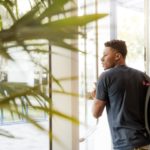
STEM Research Grant Recipients
STEM Research Grants provide support to middle and high school teachers engaging their students in authentic scientific research. Over 6 years, $775,000 has been awarded to 367 teachers. Priority consideration is given to schools that support students from low-income communities and demographics underrepresented in STEM fields.
Teachers can apply for up to $5,000 in order to purchase specialized equipment or $1,000 in preselected equipment including Arduino starter kits, camera traps, and PocketLab sensors.
For the purposes of this grant, a research project is defined as an independent investigation by a student involving experimentation to answer a scientific question outside of regular classwork. Independent research projects are frequently entered into science fairs and other competitions.
Have questions? Check out our FAQ’s here.
Previous STEM Action Grant Recipients
2017 • 2018 • 2019 • February 2020 • 2021-2022 • 2022 • 2023

R25 Summer Research Experience for High School & Undergraduate Students and Science Teachers
Purpose To provide high quality research experience for students or high school teachers during the summer academic break.
Program Announcement PAR-21-168
Due Dates for all Applications March 17, 2022, March 17, 2023, and March 19, 2024
List of Funded Awards Funded Programs from NIH RePORTER
PD/PI Eligibility Established investigators
Appointee Eligibility High school/undergraduate; high school science teachers; U.S. citizens or permanent residents
Institution Eligibility U.S. domestic institutions
Additional Information The NIH Summer Research Experience Program is an award to provide high quality research experiences for high school and/or college students or high school science teachers for 8-15 weeks during the summer academic break. R25 programs that propose at least 8 weeks, but fewer than 15 weeks, of full-time research experiences during the summer may request continued part-time support for the participants to work on their research projects during the school year, up to the equivalent of a total of 15 weeks of full-time participation, as long as the entire research experience is completed within a 12-month period.
Applications that demonstrate the potential to impact students and teachers from diverse backgrounds are particularly encouraged and may be given funding priority. All programs are expected to promote inclusive research environments, i.e., institutional and departmental environments in which trainees from all backgrounds feel integrated into and supported by the biomedical community and outline their efforts in an Enhancing Educational Inclusivity Statement .
The proposed program needs to align with the mission of the IC to which the application is submitted and not have a general neuroscience focus. ICs will not support projects, regardless of the results of merit review, if they do not fulfill current programmatic priorities. Therefore, we strongly recommend that potential applicants consult Scientific/Research Staff at the intended IC before preparing an application. NINDS will support applications focusing on summer research experiences that address or seek fundamental knowledge about the brain and nervous system by supporting and conducting research on the healthy and diseased brain, spinal cord, and peripheral nerves and to use that knowledge to reduce the burden of neurological disease. NINDS also encourages activities focused on understanding and addressing disparities in neurologic health, healthcare, and health outcomes in disparate populations, including racial and ethnic minorities, the geographically disadvantaged, sex and gender minorities, and others who have been historically underserved, marginalized, and adversely affected by persistent inequality and socioeconomic disadvantage. NINDS supports basic, translational, and clinical research .
NINDS will support a maximum of two awards per institution (identified by a unique DUNS number) at any time: one focused on students and one focused on science teachers, except with strong justification. Please note that the Summer R25 is an institutional grant for institutions to apply for and manage. NINDS does not handle admissions for funded R25 programs. If you're a parent or student seeking research opportunities, visit RePORTER for a list of NINDS-funded Summer R25 programs.
Marguerite Matthews, PhD | Program Director [email protected]
Jenny Kim, PhD | Program Manager [email protected]
Resources R25 Award Information from NIH Putting Together Your Strongest Summer R25 Application How to Apply Summer R25 Webinar
Summer 2024 Admissions Open Now. Sign up for upcoming live information sessions here (featuring former and current Admission Officers at Havard and UPenn).
5 Free Virtual Research Opportunities For High School Students

Virtual research opportunities for high school students are programs that provide hands-on experience and research projects in various STEM fields, such as mathematics, computer science, computational biology, physics, neuroscience, and engineering. These programs are designed to deepen students’ understanding of STEM and help them develop the skills needed to succeed in their academic and professional careers.
Participating in these programs can also help high school students expand their knowledge and skills in their areas of interest and work on exciting, unsolved problems with established researchers from top-tier universities.
Virtual research opportunities are especially useful for high school students who are unable to attend in-person programs due to distance, cost, or other factors. They offer a flexible and accessible way to gain valuable experience and knowledge from the comfort of their own homes. In this article, we will discuss five free virtual research opportunities available for high school students.
1. MIT Primes
MIT PRIMES is a free, year-long after-school program that provides research projects and guided reading to high school students in the areas of mathematics, computer science, and computational biology. The program is designed for students living within driving distance from Boston, and it offers four sections: PRIMES, PRIMES-USA, Menezes Challenge PRIMES Circle, and Yulia’s Dream.
PRIMES is a research-focused program in which participants work with MIT researchers to solve exciting, unsolved problems. PRIMES-USA is a distance mentoring math research section for high school juniors and sophomores from across the United States. Menezes Challenge PRIMES Circle is a math enrichment section for underrepresented groups living within commuting distance from Boston. Yulia’s Dream is a math enrichment and research program for exceptional high school students from Ukraine.
In addition to these sections, PRIMES runs two collaborative initiatives: MathROOTS, a two-week summer program for high-potential high school students from underrepresented backgrounds or underserved communities, and CrowdMath, a year-long online collaborative research project open to all high school and college students worldwide.
Finally, PRIMES STEP is a year-long math enrichment program for middle school students from Greater Boston.
Overall, MIT PRIMES aims to provide challenging and engaging opportunities for students with a passion for mathematics and science. Through research projects, guided reading, and collaborative initiatives, PRIMES seeks to foster the intellectual growth and development of high school and middle school students, and to inspire them to pursue their interests in these fields.
MIT PRIMES is a prestigious year-long after-school program that offers research projects and guided reading to high school students interested in mathematics, computer science, and computational biology.
The admissions for the 2023 cycle are closed, and the admission decisions are made by February 1. However, for the 2024 cycle, new problem sets will be posted on October 1, 2023, and applicants will have until November 30, 2023, to solve the relevant problem set(s).
To apply for MIT PRIMES, you must be a high school student (or a home-schooled student of high school age) living in the Greater Boston area, able to come to MIT weekly from February to May.
To apply, you need to fill out a questionnaire, ask for two or three letters of recommendation, and submit your solutions of the PRIMES problem set. Applicants to the Math section must solve the Math problem set (at least 70%), and applicants to the Computer Science and Computational Biology sections must solve the Computer Science problem set (100%) and the General part of the Math problem set (at least 70%). Admission decisions are based on all components of your application, and there is no application fee.
MIT PRIMES suggests a list of recommended readings as a preparation for entering the program and as a background for further research. By participating in MIT PRIMES, students can gain hands-on experience working on exciting, unsolved problems with MIT researchers and expand their knowledge and skills in these areas.
The Summer Academy for Math and Science (SAMS) is a program that provides opportunities for underrepresented high school students to explore STEM fields. The program is designed to deepen students’ understanding of STEM through traditional classroom instruction, hands-on projects, and sustained engagement with faculty and staff mentors.
SAMS Scholars are taught by renowned faculty and staff who are deeply committed to their success. They also have the opportunity to collaborate and develop meaningful relationships with peers from across the country. Through SAMS and other outreach initiatives, the program aims to develop a diverse and supportive community of STEM Scholars interested in attending top-tier universities.
The program consists of two parts: Part one is a virtual jumpstart that will occur prior to the start of the residential program. This will focus on skill-building that will be needed for the in-person program. Part two is a 5-week in-person Pre-College program where students will move into the residence halls and attend full days of courses and meetings. The academic portion of the program will conclude with a symposium, and students will move out of the residence halls at the end of the program.
SAMS is a fully funded, merit-based program, and there is no cost for scholars to participate. To be eligible for the program, students must be at least 16 years old, a U.S. citizen or permanent resident, and a junior in high school at the time of application submission. Scholars are expected to participate fully for the duration of the program and cannot participate in any other programs if selected for SAMS.

3. University of Illinois – High School Summer Research Program
The High School Summer STEM research program invites current 9th-11th graders from Illinois, Indiana, Kentucky, Missouri, Iowa, or Wisconsin to apply for an authentic six-week STEMM research experience at a world-class research university. Participants will be matched with another student, and in some cases, a teacher from their school.
The program aims to provide hands-on experience in various STEMM fields, including cancer immunology, neuroscience, artificial intelligence, physics, quantum mechanics, bioengineering, and electrical engineering.
Participants will work with established researchers in engineering, computer science, and medicine and attend weekly seminars on topics such as college admission processes and support available, communicating scientifically, and preparing research posters etc. Students will also interact with faculty, post-doctoral researchers, graduate students, undergraduate students, and local high school teachers.
Participants will showcase their research with a research poster and symposium at the end of the program. They should plan for 30-35 hours per week of research and professional development time, with a majority of activities taking place on the University of Illinois campus.
The program covers some transportation/parking expenses, meals, and a monetary award.
High school teachers play an essential role in the program, with some research projects requiring a teacher to be a co-researcher, and others having a teacher mentor who checks in weekly with the students to discuss their research progress and address any issues or challenges.
Teachers and students do not need to come from the same school, and interested individuals should apply regardless of whether they can recruit others from their school to apply.
The program also invites research faculty, staff, and graduate student researchers affiliated with The Grainger College of Engineering and the Carle Illinois College of Medicine to propose a high school research project for consideration. The proposals will be mentored by POETS YS, GEnYuS, or SpHERES research teams, which will guide two high school juniors/seniors from limited understanding to completion of a related project of their own and poster presentation explaining their research.
In summary, the High School Summer STEM research program provides high school students with an opportunity to engage in authentic STEMM research and develop professional and college-ready skills. Participants work with established researchers, attend weekly seminars, and showcase their research at the end of the program.
The program aims to provide hands-on experience and build confidence in students as scientists and engineers.
4. Simons Summer Research Program
The Simons Summer Research Program is a highly selective program that offers high school students the opportunity to conduct hands-on research with Stony Brook faculty mentors. Founded in 1984, the program attracts applicants from all over the country, with Simons Fellows being paired with a faculty mentor, joining a research group or team, and taking responsibility for a project. Students are encouraged to demonstrate independence, creativity, and an aptitude for hands-on work, with a strong interest in science. The program takes place during the summer before the student’s senior year of high school, with students participating in the program from June 26, 2023 to August 11, 2023.
In addition to working on their research project, Simons Fellows attend weekly faculty research talks, special workshops, tours, and events. At the closing poster symposium, students present their research project through a written research abstract and a research poster. Participants receive a stipend award.
The Simons Summer Research Program is supported by the Simons Foundation and is open to US citizens and/or permanent residents who are at least 16 years of age by the start of the program. The program is an opportunity for high school students interested in science to learn valuable techniques, experience life at a major research university, and develop independence, creativity, and an aptitude for hands-on work. The program aims to give students a glimpse into the world of scientific research and inspire them to pursue careers in science.

5. EnergyMag Internship
EnergyMag is offering virtual internships for high school and college students interested in increasing the share of renewable energy in the world and gaining work experience in the energy storage industry.
The internships aim to provide students with research and analysis skills that will be valuable for their future professional lives. The virtual internship allows students to complete their internship hours virtually, providing flexibility to fit the experience into their busy personal and professional lives. Additionally, virtual interns enjoy the unique rewards of learning from experts regardless of their geographic location and strengthening their information and computer skills.
The internships are strong resume boosters for employers, graduate college programs, and undergraduate programs.
EnergyMag offers half-time and quarter-time virtual internships. Half-time internships are available in the summer for two to eight weeks, with interns expected to work approximately 20 hours per week. Quarter-time internships are available all year round for one to nine months, with interns expected to work approximately eight hours per week. The internships are unpaid, and interns work from home while maintaining daily electronic contact with EnergyMag and their mentor.
Depending on the student’s graduation date, academic record, and experience, interns will be asked to research and analyze a specific company, technology, or market. The intern will be mentored, briefed, supervised, and assisted in producing a draft analysis report. If the report is publishable, EnergyMag will give the intern an internship Letter of Accomplishment.
The application process for college and high school internships requires an application explaining why EnergyMag should grant an internship, a Skype or voice interview, and a writing sample upon request. College interns are also required to provide their academic record, and high school interns should have at least one honors science or English class with a GPA above 3.25.
EnergyMag believes that internships provide the opportunity for students to learn on-the-job skills that are not easy to acquire at school but will make a big difference in their future professional success, such as learning how to research a scientific or business issue, approach strangers with positions of authority in a friendly and professional manner, analyze and synthesize information from multiple sources, and communicate professionally in writing.
The blog highlights five virtual research opportunities for high school students, providing hands-on experience and research projects in various STEM fields such as mathematics, computer science, physics, neuroscience, and engineering. These virtual research opportunities aim to provide students with a deeper understanding of STEM and develop the necessary skills to succeed in academic and professional careers. Furthermore, these programs help expand knowledge and work on unsolved problems with established researchers from top-tier universities.
Virtual research opportunities for high school students provide a flexible and accessible way to gain valuable experience and knowledge from the comfort of their own homes. These programs aim to foster the intellectual growth and development of high school and middle school students, and inspire them to pursue their interests in these fields.
CCIR connects students to professors at universities and enables them to take classes with them and get publications which can help them get into better colleges. Learn how CCIR can help you live the life of your dreams and get your career on the right path. Apply today !
Related Posts
The ccir minerva scholarship opens doors to exceptional student researchers worldwide.

Steps To Write A Great Research Paper

CCIR Academy Featured by Nature, The World’s Most Prestigious Academic Publication

Our Exceptional Alumni: College Admission Results 2020-2023
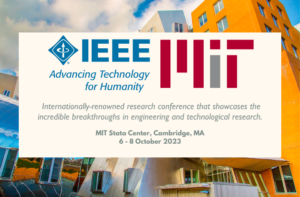
High School Student Researcher Siddharth’s Paper on Feasibility of Human Germline Genetic Editing using CRISPR/Cas9 Accepted at MIT URTC
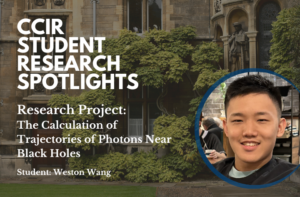
High School Student Researcher Weston on The Calculation of Trajectories of Photons Near Black Holes
Download Programme Prospectus
- Programme structure
- Research course catalogue
- Professor biographies
- Tuition and Scholarship
Start Your Application
Cambridge Future Scholar (Summer 24)
Admission is OPEN
Early Admissions Deadline: May 1
Regular Admissions Deadline: May 15
Rolling Admissions.
1-on-1 Research Mentorship Admission is open all year.

Alert: Recent phishing attempts
Please read important tax updates that took effect for tax years beginning after Dec. 31, 2021.
A new SBIR/STTR Phase II solicitation is expected in the coming weeks.
Educational opportunities
- Funding support for active research participation by high school students interested in science, technology, and mathematics in the SBIR/STTR program.
- Max funding : $6,000 per student per year
- Deadline : Rolling submission; does not extend award duration
- Recruiting tip : Guidance counselors at your local high school may be a great help. You can use this recruiting template to reach out.
- More Information
- Proposal / Budget submission instructions
- Funding support for active involvement of K-12 teachers and community college faculty in engineering research.
- Max funding : $10,000 per teacher per year
- Recruiting tip : Guidance counselors at your local middle and high schools may be a great help. You can use this recruiting template to reach out.
- The nature of the involvement of the teacher;
- The experience of the PI or other personnel in involving teachers in research;
- A biographical sketch of the teacher or the process and criteria for selecting a teacher.
- Funding support for active NSF research participation by undergraduate students.
- Max funding : $8,000 per student per year
- Recruiting tip : The career center at your local community college or university may be a great help. You can use this recruiting template to reach out.
- The nature of the involvement of the student;
- The experience of the PI or other personnel in involving students in research;
- A biographical sketch of the student or the process and criteria for selecting a student.
- Funding support to enable veteran students, pre-college STEM teachers, and/or community college faculty to participate in active NSF grants.
- Max funding : $10,000 per veteran
- Recruiting tip : Many community colleges and universities have a veterans office or resource team. You can use this recruiting template to reach out.
- Find an FPE
- SFPE Connect
- Donate Via Portal
- Donate Via PayPal

- Student Research Grants
Submissions are now closed for the March 2024 funding cycle. The next round of applications will be due October 1, 2024. The SFPE Foundation supports a number of initiatives designed to further its mission to enhance the scientific understanding of fire and its interaction with the natural and built environment. An important part of this mission is developing the next generation of fire protection engineers. The foundation encourages this through an emphasis on student involvement in the Research Roadmap program as well as through the Student Research Grant Program.
Goal: Realize the SFPE Foundation vision through providing educational and research opportunities for the next generation of fire protection engineers.
Purpose: To support innovative baccalaureate and graduate-level student research projects in fire safety science or fire protection engineering and to showcase the contributions of students to the advancement of fire protection engineering. Read about our Past Recipients .
Award Incentive
Funding: A $5,000 stipend will be provided to the student recipient(s) of the grant. Travel support to the SFPE annual conference, or equivalent may also be provided.
Grantees may have the opportunity to participate in SFPE Foundation and SFPE-affiliated events and communications to publicize the results of their research, such as the SFPE Annual Conference, SFPE Foundation website and social media outlets, and SFPE Chapter presentations, among others.
Eligibility
This program is intended for undergraduate and graduate students conducting research with a fire safety science or fire engineering focus.
Application Guidelines and Award
The grant proposal must be submitted by the student through this form [link will be active by August 1, 2024] and must include the student's faculty advisor's recommendation.
Submissions should not exceed 5 pages single-spaced (not including the cover page, recommendation letter, and Conflict of Interest Disclosure Form) and should include a description of the innovative objective of the research project, describe the tasks that will be undertaken to achieve it, and state the proposed timeline for completion. Successful applicants will situate their proposed research project with respect to addressing the knowledge gaps identified in the SFPE Research Roadmap . Additionally, if this is supplemental funding, it should be made clear how the additional funds will be used, the source of additional funding, and if any potential conflicts or restrictions exist that would impact the presentation and publication of the research.
Final decisions rest with the Foundation's Board of Governors, upon recommendation from the Technical Committee.
Proposal Recommended Format
While a standard format is not required for the submission of a proposal, it is recommended to follow the basic layout and contents as specified below.
Cover Page: Title of the project; name, email address, and affiliation of the student; name and email address of academic supervisor/sponsor; and description of any prior financial support.
- Specific Aims (Objectives)
- Background and Significance
- Methods and Procedures
- Budget and Justification
- Timing and Deliverables
- Conflicts of Interest or Restrictions on Publication ( required , complete the COI Form available here )
- Biographical Sketch of Principal Investigator, key staff, and/or students who will be involved in the proposed project
- References/Letter of Support from Academic Supervisor/Sponsor ( required )
Submissions will be accepted at any time throughout the year; however, submissions are reviewed and grants are awarded twice per year (assuming qualified submissions). Submissions must be received by March 4 to be awarded in June, or by October 1 to be awarded in November. Submit complete applications to the SFPE Foundation through this form [link will be active by August 1, 2024]. Please contact the SFPE Foundation's Research Manager, Amanda Tarbet, at [email protected] with any questions .
Project Deliverables
It is expected that the results of the research will result in the publication of a peer-reviewed research paper and that the results will be presented at an appropriate forum. The paper will additionally be hosted on the SFPE Foundation website for archival purposes.

- Bronwyn Forrest from University of Waterloo was awarded 5K to provide support for her project Human Physiological Response to Fire Exposure: A Comprehensive Model , which aims to fill gaps that currently exist with respect to detailed definition of evolved fire environments, and to address the lack of current understanding regarding how that environment impacts exposed humans.
- Deanna Craig from Clemson University was awarded 5K to provide support for her project Realizing Autonomous Structural Fire Engineering through Machine Learning , which aims to create a foundation for next-gen structural fire engineering tools that is not only streamlined, but autonomous in nature.
- Diego Alvarez Coedo from Comillas Pontifical University was awarded 5K to provide support for his project Experimental Validation of a Multi-scale Modelling Methodology for Tunnel Fires , which aims to gain knowledge in the use of multi-scale numerical models, using fire dynamics simulator, applied to tunnel fires through their validation with full-scale data and also with specific reduced scale fire experiments.
- Francesca Lugaresi from Imperial College London was awarded 5K to provide support for her project Mechanical Failure of Glazed Curtain Walls Exposed to Fire , which aims to assess the safety of a curtain wall systems under thermal effects due to fire.
- Alyssa A. DeSimone from the University of Michigan was awarded 5K to provide support for her project, Novel Fire Spread Model for Large Compartments , which seeks to create a computational fluid dynamics (CFD) model that uses the flux-time product to estimate ignition from one burning object to another.

- William Calcagno from Worcester Polytechnic institute was awarded 5K to provide support for his project State of Use of Lithium-Ion Batteries and Thermal Runaway Onset , which seeks to determine the impact usage has on the tendency for a lithium-ion battery to initiate thermal runaway.
Research Report/MA Thesis : Energetics of Lithium-Ion Battery Failure during Use and Thermal Abuse Author: William Calcagno (Recipient of a 2020 SFPE Foundation Student Research Grant ) Submitted: 2022 (Master of Science Thesis at Worcester Polytechnic Institute )
- This publication also contributes to the Fire Dynamics and Non-Building Fires threads of the SFPE Research Roadmap .
- Tests the impact of the usage condition of lithium-ion batteries on their thermal runaway properties during thermal abuse in a modified copper slug calorimeter.
- Compares results for two chemistries of cylindrical 18650 lithium-ion cells: LiNiMnCoO 2 (NMC) and LiNi x Co y Al 1-x-y O 2 (NCA).
- Average time to thermal runaway for NCA cells decreased as discharge current increased, while the average time to thermal runaway for NMC cells increased if discharge was present but did not increase continuously with increased discharge current.
- NMC cells lost charge faster than the NCA cells, which resulted in NMC cells undergoing thermal runaway during the high-discharge tests at a significantly higher temperature than every other test condition.
- The results of a variety of other comparisons between NCA and NMC are presented.
- Results suggest that while the employed test methodology can be generalized and applied to different battery chemistries, the impact of a lithium-ion battery’s usage condition(i.e., discharge current) on its thermal runaway properties cannot be generalized between different chemistries and each new chemistry should be tested in the future.

Shaorun Lin from the Hong Kong Polytechnic University was awarded 5K to provide support for his project Megafire Mitigation: A Novel Methodology to Fight the Smouldering Wildfires , which aims to advance and enrich the wildfire-fighting strategy for suppressing smouldering underground wildfires. Publications : Several publications have resulted from this project, including:
Limits of Sustaining a Flame Above Smoldering Woody Biomass in Combustion Science and Technology
- This publication contributes to the Resilience/Sustainability and Fire Dynamics threads of the SFPE Research Roadmap .
- Key takeaways:
- Explores the flaming of emission gases from the smoldering wood chips (200 kg/m 3 ) under different oxidizer flow velocities (4 mm/s-24 mm/s) and oxygen concentrations (14%-21%) through porous media.
- Once ignited on the top, the smoldering front first propagates downward (1st stage, opposed) to the bottom and then propagates upward (2nd stage, forward).
- We found that during the 1st-stage downward smoldering propagation, a stable flame of smoldering emissions could be piloted and sustained.
- Proposes a simplified heat transfer process to reveal the limiting conditions for the co-existence of flaming and smoldering.
- Enriches strategies for the clean treatment of smoldering emissions and promotes an energy-efficient and environment-friendly method for biowaste removal.
A Computational Study on the Quenching and Near-limit Propagation of Smoldering Combustion in Combustion and Flame
- This publication contributes to the Fire Dynamics thread of the SFPE Research Roadmap .
- Builds a physics-based 2-D computational model that integrates heat and mass transfer and heterogeneous chemistry to investigate the limiting quenching conditions of in-depth smoldering propagation in a typical biomass sample.
- Simulation results predict that the smoldering quenching occurs as the sample width decreases or the wall-cooling coefficient increases, agreeing well with experiments.
- The modelled minimum smoldering temperature is about 350 °C, and the minimum propagation rate is around 0.5 cm/h.
- Further analysis demonstrates that either the smoldering temperature or propagation rate increases with the sample width and eventually approaches it maximum value.
- Explores the influences of the ambient temperature and oxygen level on the smoldering quenching distance.
Smoldering Ignition Using a Concentrated Solar Irradiation Spot in Fire Safety Journal
- Investigates the smoldering ignition of tissue paper by a concentrated sunlight spot with heat fluxes up to 780 kW/m 2 , which is focused by a transparent glass sphere.
- The measured minimum spot irradiation for smoldering ignition is not a constant and is much higher than 11 kW/m2 measured in a traditional cone-calorimeter test.
- As the diameter of the irradiation spot decreases from 20 to 1.5 mm, the minimum irradiation for smoldering ignition increases from 17.5 to 205 kW/m 2 , and the ignition energy increases from 0.084 to 2.0 MJ/m 2 .
- A simplified heat transfer analysis reveals that the lateral conductive cooling within the fuel becomes dominant for a smaller spot ignition area.
Smoldering Propagation and Blow-off on Consolidated Fuel Under External Airflow in Combustion and Flame
- This publication contributes to the Fire Service and Fire Dynamics threads of the SFPE Research Roadmap .
- Quantifies the smoldering propagation rates on consolidated biomass and the blow-off limits under concurrent and opposed external airflows up to 50 m/s.
- As the airflow velocity increases, the smoldering propagation rate first increases to its maximum value (Oxygen-limited Regime) and subsequently remains stable (Thermal Regime), regardless of the airflow direction. Afterward, it slightly decreases (Chemical Regime) until blow-off, and the blow-off of opposed smoldering is easier, similar to the pattern of flame spread.
- The blow-off airflow velocity (13–46 m/s) of smoldering combustion is around ten times larger than that of flaming combustion, and it decreases as the fuel diameter or density increases.
How to Build a Firebreak to Stop Smouldering Peat Fire: Insights From a Laboratory-scale Study in International Journal of Wildland Fire
- This publication contributes to the Fire Service and Wildland/WUI Fire threads of the SFPE Research Roadmap .
- Explores the feasibility of firebreaks to control smouldering peat fires through laboratory-scale experiments with the dry-mass moisture content (MC) of peat soil varying from 10%(air-dried) to 125%.
- Finds that smouldering peat fire may be successfully extinguished above the mineral soil layer, even if the peat layer is not entirely removed.
- There are two criteria for an effective peat firebreak: (I) adding water to make the peat layer sufficiently wet (>115% MC in the present work); and (II) ensuring that the peat layer is thinner than the quenching thickness (<5 cm). Criterion I may fail if the water table declines or the peat layer is dried by surface fires and hot weather; thus, satisfying Criterion II is more attainable.
- A sloping trench-shaped firebreak is recommended to guide water flow and help maintain high peat moisture content.
Climate-induced Arctic-boreal Peatland Fire and Carbon Loss in the 21st Century in Science of The Total Environment
- This publication contributes to the Wildland/WUI Fires thread of the SFPE Research Roadmap .
- Develops a new physical model to estimate the extra carbon emissions from artic-boreal peat fires.
- The predicted total carbon loss from boreal peat fires in the 21st century is 28 Gt.
- Under a larger artic warming rate, the peat fire carbon loss with further increase.
- The boreal peat fires affect the ecosystem through multiple biogeochemical processes.

Natalia Flores Quiroz from Stellenbosch University was awarded 5K to provide support for her project on the development, and application of forensic investigation procedures for informal settlement fires, which seeks to develop new tools of fire investigation for people living in poor conditions.
Publications:
Several publications have resulted from this project, including:
Fire Incident Analysis of a Large-scale Informal Settlement Fire Based on Video Imagery in International Journal of Disaster Risk Reduction
- This publication contributes to the Human Behavior, Non-Building Fires, Wildland/WUI Fires, as well as Fire Dynamics and Fire Service threads of the SFPE Research Roadmap .
- Importance of studying real fire incidents in informal settlements to understand the fire spread, the human behavior, and firefighters’ response and operations with respect to those incidents.
- Implications for the development of policy for safety during urban environment large-scale fires, as well as the development of improved interventions, firefighter strategies, community layouts, and response strategies for low-income communities.
Application of the Framework for Fire Investigations in Informal Settlements to Large-scale Real Fire Events – Consideration of Fire Formation Patterns, Fire Spread Rates and Home Survivability in Fire Safety Journal
- This publication contributes to the Non-Building Fires, Forensics/Investigations and Wildland/WUI Fires threads of the SFPE Research Roadmap .
- The application of the Framework for Fire Investigations in Informal Settlements (FFIIS) allows developing hypotheses that more accurately define the area of fire origin and pattern formation sequence.
- Fire pattern for large post-flashover fires in Informal Settlements can be treated as wildland fires pattern.
Towards Understanding Fire Causes in Informal Settlements Based on Inhabitant Risk Perception in Fire
- This publication contributes to the Human Behavior and Wildland/WUI Fires threads of the SFPE Research Roadmap .
- Survey respondents’ risk perception emphasized factors outside their control when asked about their own household, but personal irresponsibility when asked about their community.
- Inhabitants’ fire risk perception of their settlement is similar to that of firefighters in previous research.
- The risk mitigation demands are more focused on decreasing the consequences of the fire than on the occurrence of a fire event.
- The (South African) national fire statistics are not capturing the causes of real fire incidents in informal settlements.
- Improvements to the documentation process after a fire event could provide critical information for the implementation of prevention measures.

Sandra Vaiciulyte from the University of Greenwich awarded 5K to provide support for her project, When Disaster Strikes: Human Responses to Wildfires and Evacuation in the South of France and Australia , which is a study that focuses on human behavior, specifically that of people from different cultures in wildfire scenarios. Publications:
Several publications have resulted from this project, including: Exploring ‘Wait and See’ Responses in French and Australian WUI Wildfire Emergencies in Safety Science
- This study systematically compared survey responses of residents in French and Australian at-risk regions.
- The results showed regional differences, with participants in France tending to choose to ‘wait and see’ as a response to fire cues more often than participants in Australia.
- There was less waiting when participants received environmental as compared to social cues, although the type of environmental/social cue appeared to moderate this behaviour.
Cross-cultural Comparison of Behavioural Itinerary Actions and Times in Wildfire Evacuations in Safety Science
- This study compares survey data from residents of areas at-risk of wildfires in the South of France and Australia.
- Results revealed that, across the two regions, the discrete actions in response to a wildfire threat were similar overall, albeit their priority sometimes differed. However, when analysed by category, the prioritisation of actions was uniform across samples.
- Regional differences were also observed in relation to: mean number of actions, time committed to actions and the influence of socio-demographic factors, indicating geographical and cultural determinants.
- Franz Richter from Imperial College London awarded 5K to provide partial support for the Computational Investigation of the Timber Response to Fir e , which is a study that focuses on the creation of a toolkit to more accurately predict the charring rate of timber, thereby helping fire engineers and regulators assess the safety of proposed building designs.
- Dr. Michael Gollner from the University of Maryland awarded 5K to provide partial support for the graduate student program instructor and lecture and laboratory materials for An Introduction to Math and Physics through Fire Dynamics , which is a unique, semester-long, on-campus high school bridge program designed to introduce students to advanced concepts in chemistry, physics, and mathematics through the lens of fire dynamics, so as to increase their exposure to, and understanding of, the value of these concepts, which are typically taught independently as separate areas of study.
- Dr. Brian Meacham from Worcester Polytechnic Institute awarded 5K to provide partial support for the development of a textbook entitled Fire Performance Analysis for Buildings , which will be published by John Wiley & Sons. The textbook will provide a framework for evaluating the performance of buildings against fire scenarios that link the fire, active and passive fire defenses, people, building architecture, and site conditions. The award will help support the participation of students and others to assist in the completion of fire performance analysis examples, supporting graphics, and the final technical review.
- Dr. Brian Meacham from Worcester Polytechnic Institute awarded 5K to provide partial support for the research project Post-Earthquake Fire Performance of a Light-Gauge Cold-Formed Steel Framed Building. The funds from this grant will support room-scale fire tests in order to assess the fire performance of structural and non-structural systems, including exit system components (corridors, stairs, doors), fire- and smoke-rated compartmentation (walls and ceilings), exterior system performance (walls, windows), and if time and resources permit active fire protection systems. The research is slated to begin in May 2016 and findings will be summarized and disseminated via multiple formats, including conference papers, journal articles, and technical reports.
- Egle Rackauskaite from Imperial College London awarded 15K to provide partial support for the research project Response of Steel and Concrete Structures to Travelling Fires. The funds will go towards creating a collaboration between the Imperial College London and the University of Michigan to investigate and compare the structural response of steel frames and concrete frames to traveling fires. The research will capture the fire heterogeneity effect on the structural response and quantify it in a probabilistic framework. This will identify the critical fires that could lead to the most severe conditions for the structures.
- Isaac Leventon from The University of Maryland awarded $11,607 to provide partial support to provide a new high school bridge course: An Introduction to Math and Physics through Fire Dynamics. The funds will go towards creating a semester-long program that is designed to introduce students to advanced concepts in chemistry, physics, and mathematics, through the lens of fire dynamics to increase their exposure to, and understanding of, the value of these concepts, which are typically taught independently as separate areas of study. By studying the content of this course as it applies to a series of real-world applications, student awareness of the responsibilities and career opportunities of a fire protection engineer is also developed. Watch a story on The University of Maryland-funded course Sparking a Love for Science by Studying How Christmas Trees Burn .
- Dr. Jose Torero from The University of Queensland was awarded 5K to provide partial support to the creation of a fire safety engineering program at The University of Queensland for the creation of a new SFPE Student Chapter (UQ-SFPE). You can find all the great things UQ-SFPE is doing here .
9711 Washingtonian Blvd.
Gaithersburg, MD 20878
+1 301-718-2910
- Board of Governors
- Governance Documents
- Annual Report
- 2022 APCISS Student Scholars
- Global Reach News Article
- Subscribe to Foundation Monthly
- 2024 Foundation Award Nominations
- Research Impact
- New! Research Impact Explorer
- Ongoing Research
- Funded Research
- Requests for Proposals
- Research in Fire Engineering Webinars
- Academic Leadership Council
- 2022 GCI Summit
- 2023 GCI Summit
- GCI White Papers
- GCI Student Research Fellows
- Become a GCI Founding Partner
- WUI Working Group
- WUI Virtual Handbook
- Ways To Give
- Planned Giving
- Corporate Donors
- Chapter Donors
- Fund & Matching Campaigns
- Donor Stories
An official website of the United States government
Here's how you know
Official websites use .gov A .gov website belongs to an official government organization in the United States.
Secure .gov websites use HTTPS. A lock ( Lock Locked padlock ) or https:// means you've safely connected to the .gov website. Share sensitive information only on official, secure websites.
Most NSF systems and services, including NSF.gov, Research.gov and FastLane, will be unavailable from Friday, April 26, 11 p.m. EDT – Saturday, April 27, 8:00 a.m. EDT due to extended maintenance. We apologize for any inconvenience.
Research Experiences for Undergraduates (REU)
- REU Program Overview
- Program Solicitation
For Students
- Search for an REU Site
- For Faculty
- REU Contacts
- Research Areas
NSF funds a large number of research opportunities for undergraduate students through its REU Sites program. An REU Site consists of a group of ten or so undergraduates who work in the research programs of the host institution. Each student is associated with a specific research project, where he/she works closely with the faculty and other researchers. Students are granted stipends and, in many cases, assistance with housing and travel. Undergraduate students supported with NSF funds must be citizens or permanent residents of the United States or its possessions. An REU Site may be at either a US or foreign location.
By using the web page, Search for an REU Site , you may examine opportunities in the subject areas supported by various NSF units. Also, you may search by keywords to identify sites in particular research areas or with certain features, such as a particular location.
Student Research Grant Program
The Society of Wetland Scientists aims to develop and encourage wetland science as a distinct discipline by providing support in student education, curriculum development and research. To support this goal, SWS offers partial funding of wetland-related research conducted by undergraduate and graduate students from an accredited college or university worldwide. These grants are intended to aid student's costs of travel, room and board in the course of field investigation and to help cover costs of expendable materials and supplies required in the execution of the proposed research.
Deadline: May 1, 2024
All SWS student members conducting undergraduate or graduate level research in wetland science at an accredited college or university who have not previously been awarded an SWS Research Grant are eligible to apply. Not an SWS member? Visit our student page to find more information and to join SWS.
- Graduate Student News
Three Annenberg Doctoral Candidates Awarded 2024 Sachs Program Grants
Azsaneé Truss, Cienna Davis, and Melissa B. Skolnick-Noguera were all awarded funding for creative projects from the Sachs Program for Arts Innovation.
By Gillian Duffalo
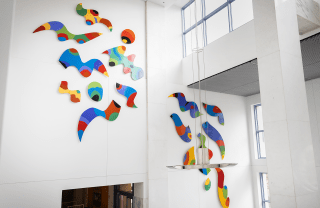
Photo Credit: Eric Sucar
The Sachs Program for Arts Innovation at the University of Pennsylvania has announced that Annenberg School doctoral candidates Azsaneé Truss, Cienna Davis, and Melissa B. Skolnick-Noguera are awardees of its 2024 Student Grants .
The Sachs Program offers grants to support students in their creative pursuits and promote broader access to the arts. These grants are designed to empower students to develop and lead ambitious projects, ranging from performances and exhibitions to collaborative events.
Azsaneé Truss
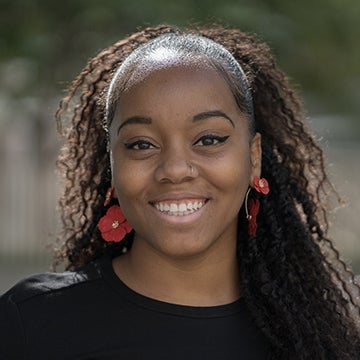
Truss’s project, entitled " Conspi(racism) ," is a short film exploring the culturally specific roots and logics of conspiracy theorizing amongst Black Americans via glimpses of an intimate conversation at a listening party and an exploration of the archives of the crack epidemic.
Her film will be grounded by a listening party: a gathering where Black people will listen to music related to the crack conspiracy and have discussions elicited by each song. Using the content from conversations, Truss plans to drive a deep dive into archives related to the crack epidemic and its surrounding conspiracy.
The project will include explorations of community-based sites of preservation throughout Philadelphia, such as The Colored Girls Museum, the KyKy Archives, and the Black Culture Museum.
At Annenberg, Truss's dissertation project studies conspiracy theorizing in Black American art and media. Truss is academically committed to understanding what sorts of knowledge exist outside of the written word, attempting to understand how multimodal forms might have more to offer in the way of liberatory knowledge production processes.
Cienna Davis
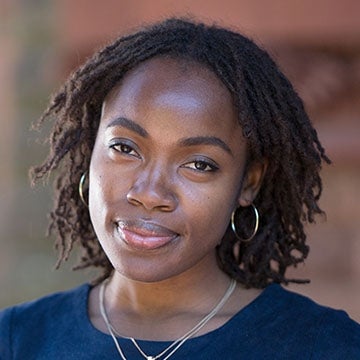
Davis’s project, " (Digit)al Dread," considers both touch and technology as methods to explore Black hair care practice.
Davis explains: “The project will result in a physical assemblage that uses Black hair care practices (braiding, twisting, locking, etc.) to merge afro-hair with various items and materials associated with electronic technologies and diasporic memories. The assemblage will be interactive, allowing Black femmes to use their own hair to plug into the installation — hearing stories, touching memories, and smelling scents that invoke the kind of sacred, communicative technology of Black hair care practice.”
The project has three phases: a visit to the e-waste village Agbogbloshie in Accura, Ghana where Davis will collect e-waste materials and connect with local laborers and hair braiders; field work in Berlin with fellow artists that will include a focus group on Black hair care in the 21st century; and an installation at the opening of the Transnational Feminist Networks Symposium that Davis is organizing with fellow graduate students at Annenberg.
At Annenberg, Davis utilizes performance ethnography to engage Afro-textured hair as language and communication network. She is interested in digital embodiment and transnational Black feminist modes of techno-vernacular creativity.
Her research examines the role of digital technology and the Internet in transforming processes of racialization and racial identity formation.
Melissa B. Skolnick-Noguera
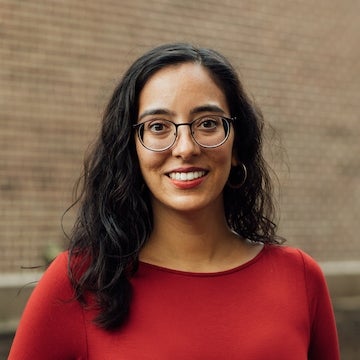
Skolnick-Noguera's project, " Philadelphia Artists & Culture Keepers: A Digital Media Project," will highlight the stories of Latine and Black artists who use their creative work alongside social change in the Philadelphia region.
At Annenberg, she investigates the cultural arts network in Philadelphia, and how praxis and discourse impacts politics and policy. While doing her dissertation research, she saw a need to document the creative projects and visionary solutions BIPOC artists are developing that mainstream media institutions fail to highlight.
As a Latina daughter of an immigrant, she is part of communities that are often at the forefront of arts/culture and social change, yet these narratives are often invisibilized, she says.
Skolnick-Noguera sees this project is an opportunity to make research more accessible outside of academia and as a tool for advocating for more sustainable cultural equity in the Philadelphia region.
"Philadelphia Artists & Culture Keepers" is part of a wider digital archival project Skolnick-Noguera is working on that will visually show the artists in their element, providing a cinéma vérité look into their environments.
- Visual Communication
Research Areas
- Culture & Media
Related News
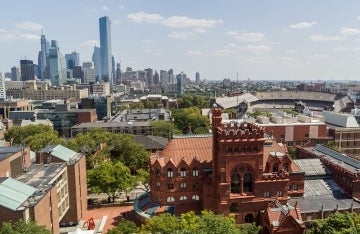
Azsaneé Truss Receives Penn Prize for Excellence in Teaching
Kallahan brown named 2023 presidential ph.d. fellow.
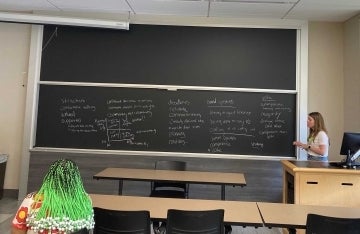
Doctoral Students Collaborate With Philadelphia High School Students on Health Communication Research
.
, , .
, , .
An official website of the United States government
Here's how you know
Official websites use .gov A .gov website belongs to an official government organization in the United States.
Secure .gov websites use HTTPS. A lock ( Lock Locked padlock ) or https:// means you've safely connected to the .gov website. Share sensitive information only on official, secure websites.
Most NSF systems and services, including NSF.gov, Research.gov and FastLane, will be unavailable from Friday, April 26, 11 p.m. EDT – Saturday, April 27, 8:00 a.m. EDT due to extended maintenance. We apologize for any inconvenience.

Research Assistantships for High School Students (RAHSS)
Important information for proposers.
All proposals must be submitted in accordance with the requirements specified in this funding opportunity and in the NSF Proposal & Award Policies & Procedures Guide (PAPPG) that is in effect for the relevant due date to which the proposal is being submitted. It is the responsibility of the proposer to ensure that the proposal meets these requirements. Submitting a proposal prior to a specified deadline does not negate this requirement.
NSF celebrates the progress that U.S. universities have made in bringing diversity to the science and engineering enterprise. Strategies to successfully broaden participation during pre-college years will help ensure a diverse pool of future students, faculty and researchers. As a part of a new or renewal NSF proposal or as a supplemental funding request to an existing NSF Award, the Directorate for Biological Sciences (BIO) will consider requests that:
- Foster interest in the pursuit of studies in the Biological Sciences; and
- Broaden participation of high school students, particularly those who are underrepresented minorities, persons with disabilities, and women in sub-disciplines where they are underrepresented.
For further details, see Dear Colleague Letter: NSF 18-088 .
Program contacts
Organization(s).
- Directorate for Biological Sciences (BIO)
This page uses technologies your browser does not support.
Many of our new website's features will not function and basic layout will appear broken.
Visit browsehappy.com to learn how to upgrade your browser.

- university of new orleans
- campus news
- two uno chemistry professors selected for nsf career awards
CAMPUS NEWS: APRIL 26, 2024
Nsf career awards, two uno chemistry professors selected for nsf career awards.
Share this article
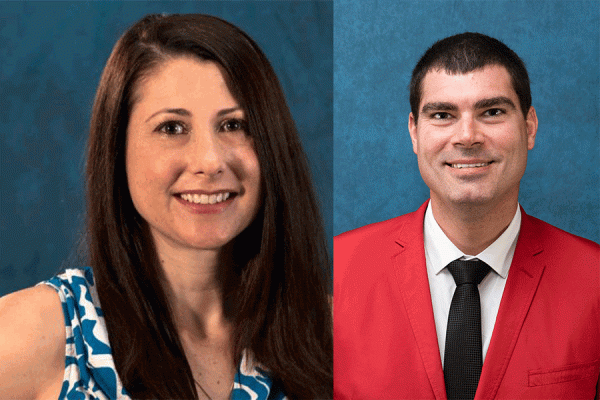
University of New Orleans chemistry professors Phoebe Zito and David Podgorski have been selected for a National Science Foundation CAREER Award.
Two University of New Orleans chemistry professors have been awarded CAREER grants, the most prestigious award presented by the National Science Foundation. Chemists David Podgorski and Phoebe Zito, whose expertise is in environmental chemistry, are the recipients of a 2024 Faculty Early Career Development Program award.
The award seeks to support faculty who have the potential to serve as academic role models in research and education and to lead advances in the mission of their department or organization. In selecting recipients, the NSF favors research with the potential to build a firm foundation for a lifetime of leadership in integrating education and research.
"The awarding of two prestigious NSF Career Awards to Dr. Zito and Dr. Podgorski in the Chemistry Department is unheard of and is a testament to their outstanding skills as researchers in environmental effects of pollutants on ecosystem health across a broad range of environments,” said Steven Johnson, dean of the College of Sciences.
The awards, which are for five years, each total more than $700,000. The NSF awarded only 500 CAREER grants for the 2024 cycle.
“This award validates my path to become an independent researcher in this field. It also attests to the four years I put into the development of this research program, including my plan for education and outreach,” said Zito, who joined UNO’s faculty in 2019.
Podgorski, who has been at UNO since 2017, said receiving the award as a faculty member in the UNO Department of Chemistry is the “cherry on top.”
“It is no secret that UNO lacks the research infrastructure that you would find in other major laboratories. This award is evidence that we can succeed despite those challenges and contribute to bringing resources to UNO instead of going elsewhere to find them,” Podgorski said.
Podgorski applauded the support he receives from his department.
“The work environment is polar opposite from my previous experience,” said Podgorski, who described the climate at a former job as toxic. “The support I received from my colleagues in the Department of Chemistry re-energized me, even through COVID. Although I’ve been relatively successful over the past few years, this award provides confirmation that I have transcended those who tried to bring me down.”
For Zito and Podgorski, who are married, their awards mean double the exposure for their department and having an academic partner who can appreciate the research journey is a bonus.
“One of the perks of marrying your colleague is that you do not have to go on the academic rollercoaster alone and we both support one another’s professional and personal growth,” Zito said. “We couldn’t imagine our lives any other way.”
The awards also serve as testament to the impactful research—both locally and globally—that UNO’s faculty members are conducting, Zito and Podgorski said.
“Our chemistry department is very small, so this type of award means so much to us and helps put us on the map to be competitive at the national level,” Zito said. “Also, UNO is the only public research university in New Orleans. I can use it as a platform to let others know that despite our size and lack of resources, we can still do good science.
“At the end of the day, it helps provide better resources and opportunities for students who come to UNO to study chemistry.”
Podgorski’s Research
Thousands of oil spills occur each year in U.S. waters and energy from the sun can chemically break down the components released in such oil spills, Podgorski said. There are hundreds of thousands of chemical compounds in oil, and the products of their chemical transformation can have deleterious effects on human health and sensitive aquatic ecosystems, he said.
“Louisiana’s coast is invaluable to the state in terms of our economy and food resources,” Podgorski said. “The information obtained from this study will help us understand more about how our coast is impacted after an oil spill. Podgorski’s research, titled “Measurement of Photochemical Mechanisms, Rates, and Pathways of Radical Formation in Complex Organic Compounds,” will study the process, length of time, and compounds that survive when hydrocarbon compounds are exposed to sunlight.
There is a plethora of information about the breakdown and removal process of a couple of hundred small-size compounds in oil by the sun. However, knowledge is lacking about the chemical fate of the polyaromatic hydrocarbon (PAH) fraction, an important compound class in oil, Podgorski said.
The research will provide fundamental information on the reactivity of large compounds present in petroleum, he said. Data from the project will show how the sun removes these compounds from the environment and how long it takes.
“Essentially, this information will tell us how the compounds break apart in the environment, where they end up, and whether we should be concerned about them,” Podgorski said. “In turn, this information can be used in risk assessment models.”
In addition, his project will provide training and mentoring to college and high school students.
Zito’s Research
Zito’s research titled, “A Bottom Up Approach Toward Understanding the Sunlight Driven Mechanisms and Pathways for the Release of Metals from Petroleum,” will study how sunlight changes petroleum-bound metals and their impact on ecosystem health.
The energy in sunlight can break down petroleum, but very little is known about the resulting materials, Zito said. Even though the oil is invisible once it has been cleaned up, it can still have detrimental effects on aquatic health, she said. Oil in the presence of sunlight produces compounds that are water-soluble and can mobilize through the water. Several of these compounds contain heavy metals which are frequently found in petroleum mixtures, Zito said.
“This research is important to the public due to the increasing amount of pollution entering our water every day,” Zito said. “In Louisiana there are thousands of oil spills a year, each one having the potential to release heavy metals into the environment.” Research is necessary on heavy metal reactivity as well as heavy metal effects on aquatic life. Data from the project will show how sunlight helps release the metals from petroleum and how their transformations affect the natural biogeochemical cycle, Zito said.
Zito said the research will also include education and outreach activities to introduce students to potential STEM careers, including in industry.
“Educating the community through outreach events and having hands-on research available for New Orleans high school students is a way to spread awareness about the effects of heavy metal pollution on the environment,” Zito said.
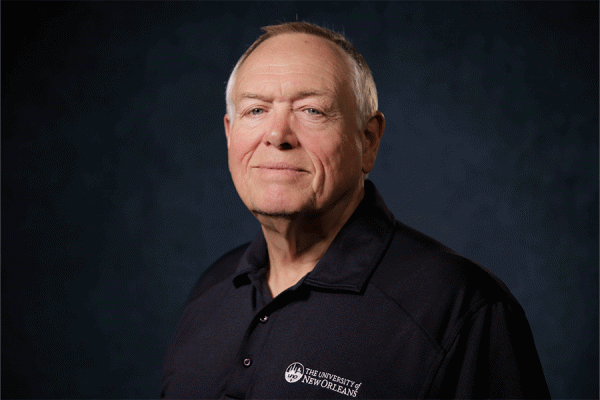
Education Professor Shares Five Decades of Reflections in ‘100 Scribblings’
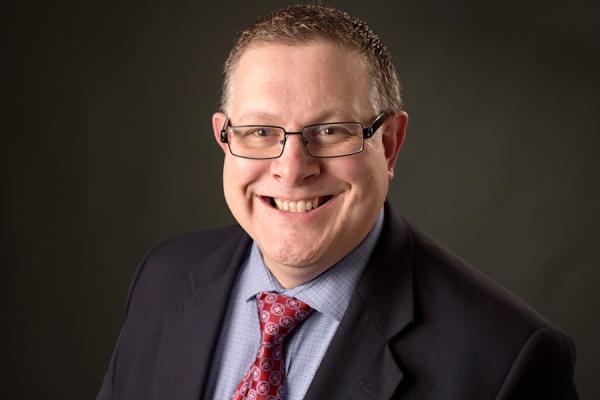
The University Selects New Vice President for Enrollment Management
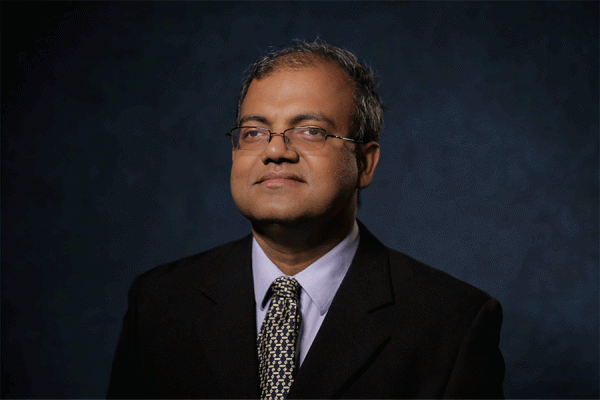
UNO Professor Uttam Chakravarty Named ASME Fellow

First International Economics Olympiad for High School Students Starts in Moscow
This event was initiated by the higher school of economics (hse) and is supported by the sberbank charity fund ‘contribution to the future’ and the new economic school. a total of 63 contestants from 13 countries are competing in the olympiad. all of them have passed a strict selection process and are national competition winners..
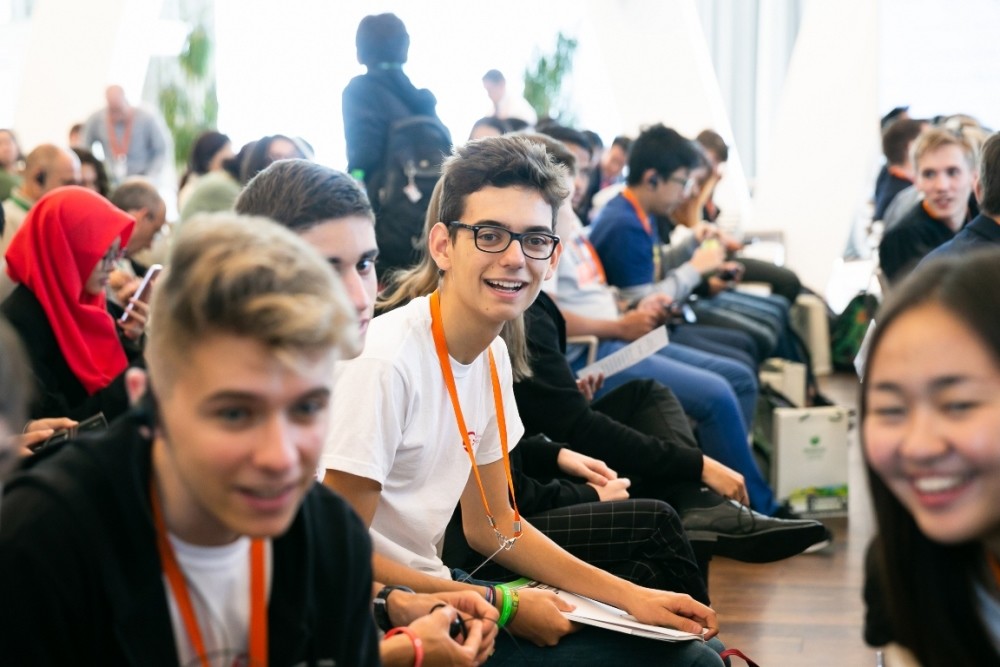
‘This is a landmark event for the global academic community, since Russia is not only the organizer, but also the initiator of the Olympiad’, said Anton Kotyakov, Deputy Minister of Finance of Russia, at the opening ceremony. He noted: ‘This intellectual competition demonstrates the importance of this sphere not only for adults, but also for younger researchers’.
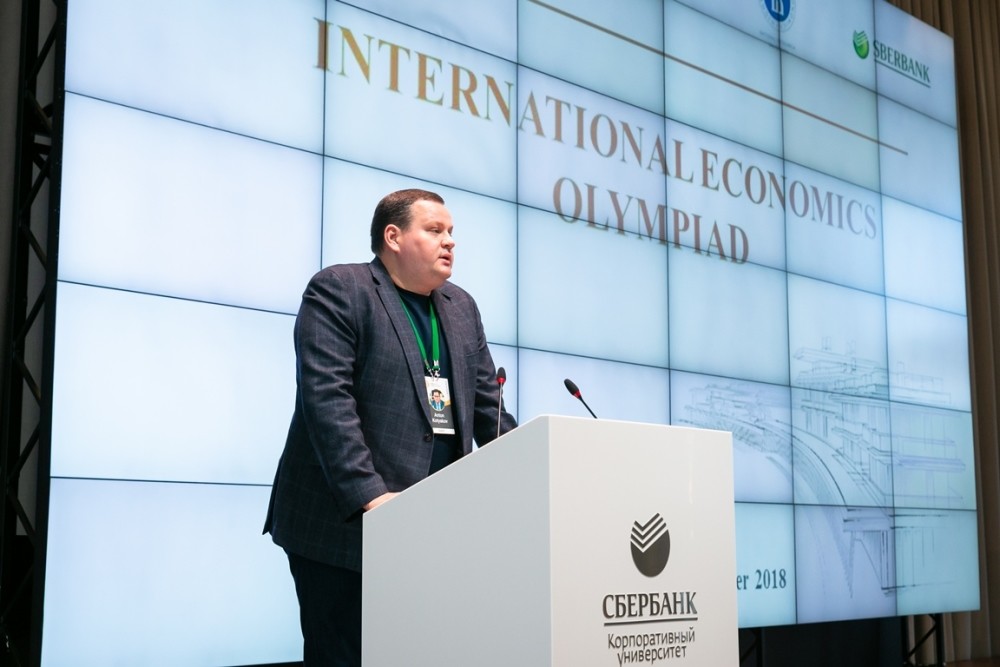
‘This Olympiad is a step towards mutual understanding and recognition of the fact that knowledge, skills, and goodwill will eventually lead us to success’, emphasized Bella Zlatkis, Deputy Chairperson of the Executive Board of Sberbank, in her welcome address.
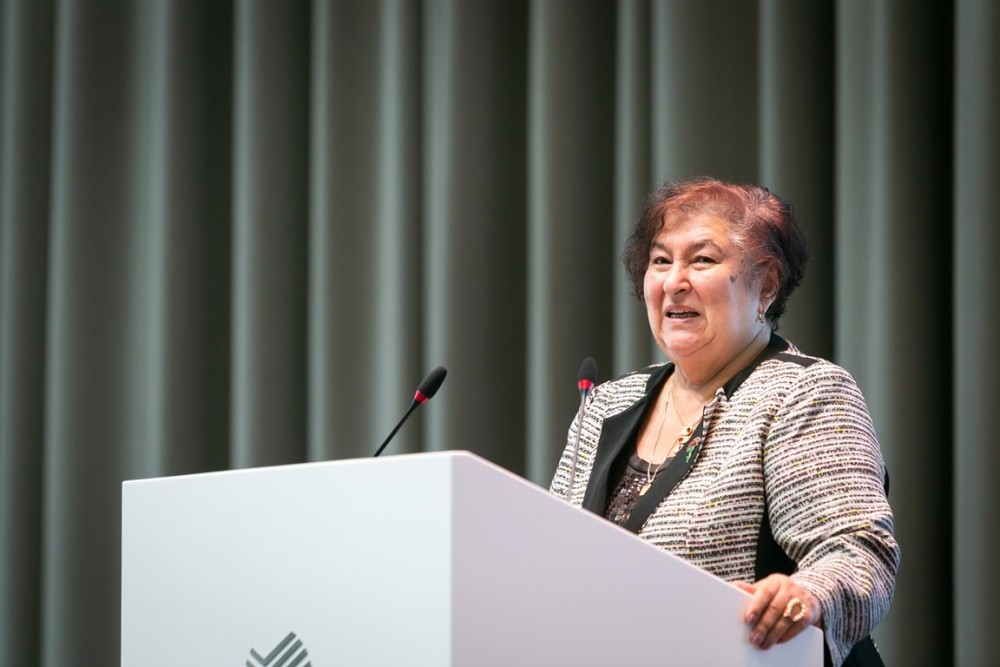
Maxim Oreshkin, Minister of Economic Development of Russia, spoke to the participants via a video address.
The Olympiad will last a week and consists of three stages, each with its own topic: economics, financial literacy, and a business case. During the first two stages, the contestants will be scored individually, while at the third stage, they will work in teams. Based on the results of all three stages, the winners will be announced for individuals and teams. In addition, prizes will be awarded for outstanding results or solutions at specific stages of the competition.
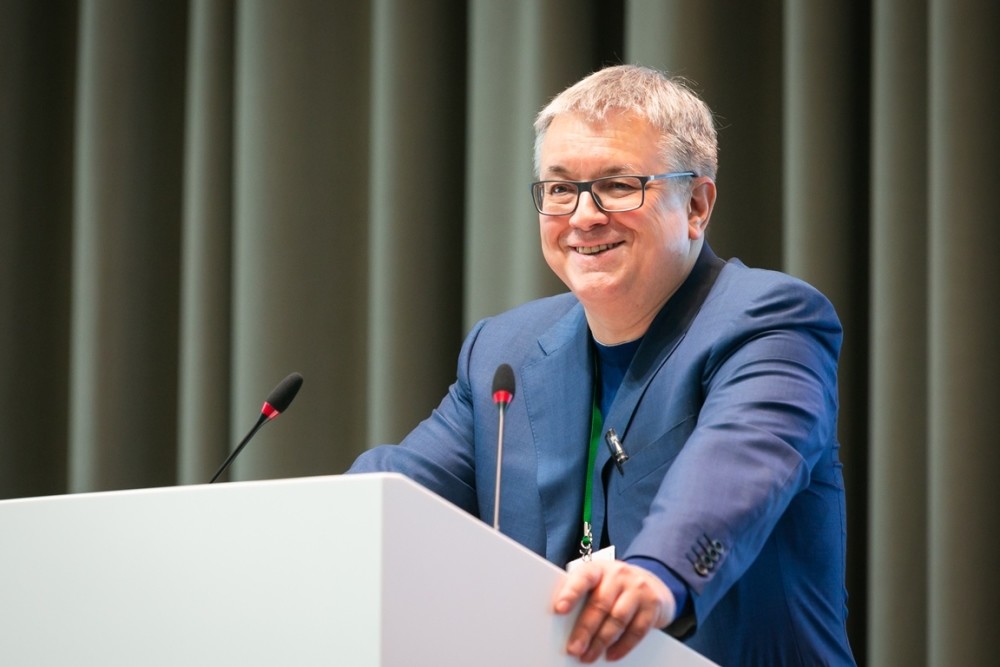
HSE Rector Yaroslav Kuzminov said that ‘the state is trying to improve financial literacy in all demographics: the Central Bank, the Ministry of Finance, and the educational system are all involved in these efforts. Economics, as well as law, are not mandatory school subjects in Russia at the moment. This should change. Those who do not study economics and law in their school studies are susceptible to for economic and civil failure’.
International high school Olympiads have a long tradition. However, before today, they were only organized in natural science and mathematics, since it’s easier for school students to compare their knowledge in these particular areas. ‘The fact that we are, at long last, holding an Olympiad in economics proves that this is a natural and globally-oriented area, since there is no separate Chinese, or Russian, or American economic theory’, Yaroslav Kuzminov said, adding: ‘To have a view of the world as something united, it’s essential to recognize that social sciences led by economics are objective and international; knowledge in economics and such tools go beyond the immediate interests of states and companies’.
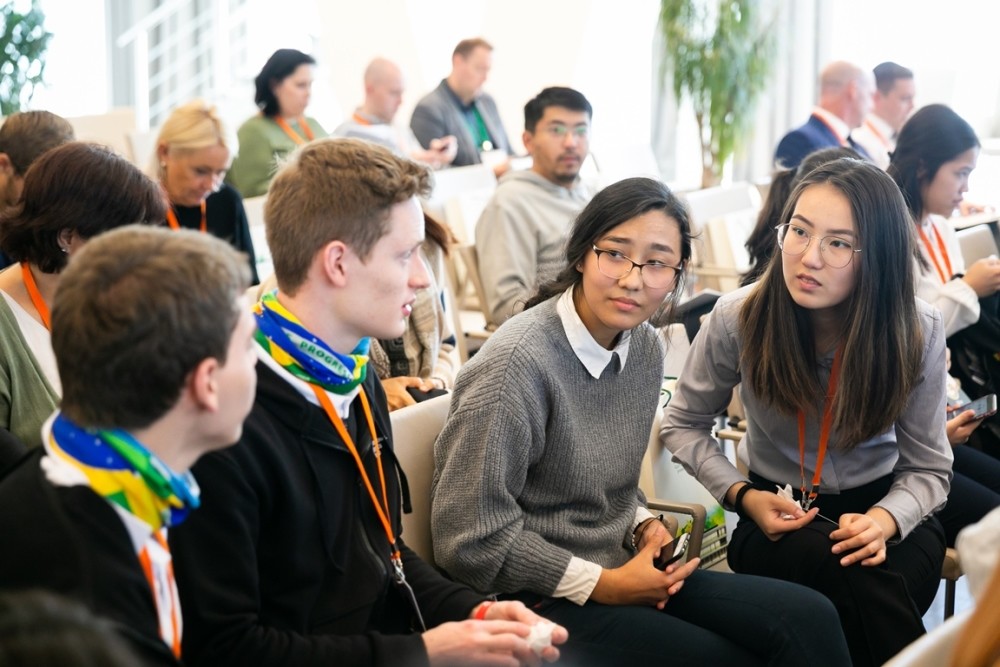
Ruben Enikopolov, NES Rector, agreed with him: ‘The three words in the Olympiad’s name are important: international, since, like with the multiplication table, there is no national economic science, it is international; Olympiad, because participation is more important than victory; and economics, as this area, for many years, didn’t receive much attention, despite its crucial role in society’.
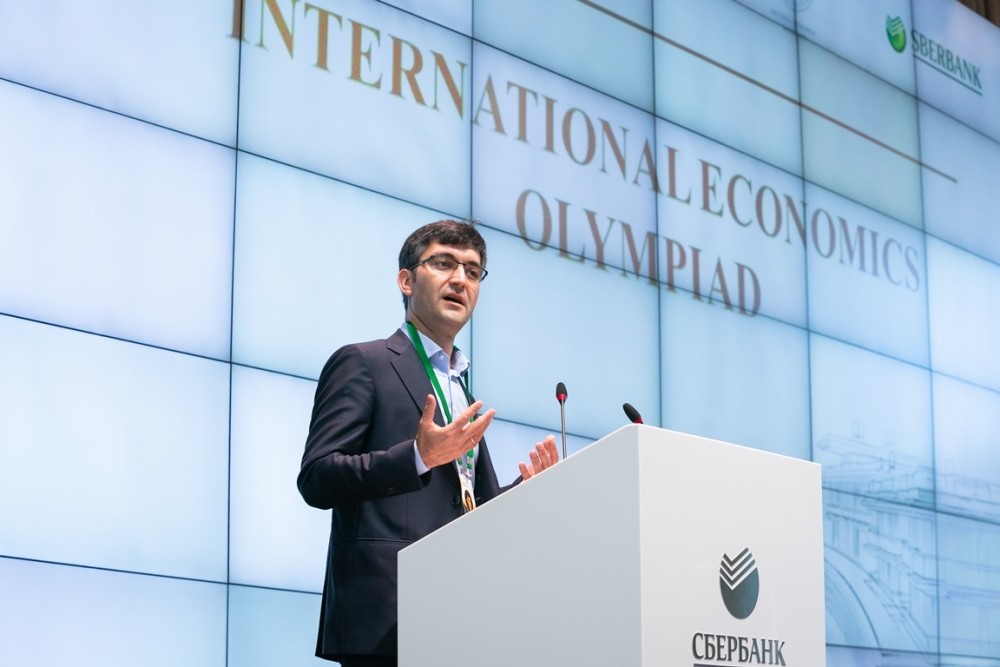
Eric Maskin, Nobel laureate in Economics, Adams University Professor at Harvard University and the Chairman of the HSE International Advisory Committee, is the head of the Board of Trustees of the Olympiad. ‘I don’t agree with Karl Marx on everything but I agree with him on the importance of economics. Economics in my view and his view is the foundation of civilization. If things go wrong with the economy, everything else goes wrong. Ten years after the great financial crisis we are still not fully recovered, in particular, our politics hasn’t completely recovered – political problems in Europe, US, China all have their roots in the economic events that took place ten years ago. It is reassuring to me that there are young people coming into the picture who are seriously interested in economics. We are going to rely on you to solve the economic problems that are the foundation of our political problems’. On the first day of the Olympiad Professor Maskin delivered a lecture on mechanism design, which is a new field of economics aimed at developing a set of tools that can be used to make optimal decisions that involve several players. These mechanisms might be employed to solve such problems like climate change or financial crises.
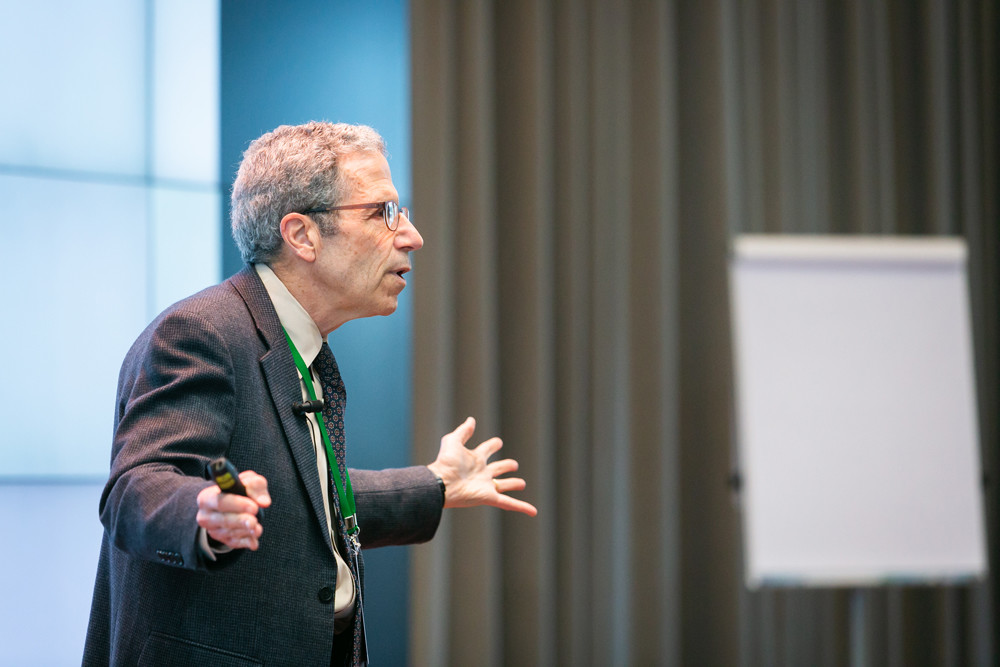
Humberto Llavador (Universitat Pompeu Fabra, Spain), Head Judge, Member of Executive Board
At our university we have an award for the best research work that high school students do – in Spain all high school students need to do a research project in their last year of school. Talking about research papers in economics, students seem to be primarily interested in two main topics – inequality and climate change or the environment more broadly. The last surveys show that inequality and environmental issues have become more relevant in many countries than the traditional issues of unemployment, financial crisis, or terrorism and safety. So for high school students these issues are also the most pressing.
At this competition, economics part of the Olympiad would probably present the most difficulty for the contestants because it deals with reasoning and intuition. Economic intuition is something that requires some time and talent to acquire. The first task on this Olympiad will be evaluated automatically – by a programme. The second and third require evaluating the capacity to reason in economic terms and for the case study – to also think in the business perspective. So there is no single one correct answer. Maybe there are no the best solutions, but there are some that are better than others. So we will rank the solutions because we do not need to know what is the best, we only need to know what is better.
The most challenging thing about this Olympiad is the scope of topics the syllabus covers. The organizers wanted to focus on economic thinking and intuition. The idea of economic thinking and reasoning is common regardless of what the particular national syllabus in economics there is. It’s not going to be about specific formulas but more about an economic mindset.
I think economics should be a mandatory subject at schools. However, we have to carefully define the contents. Everybody should be economically literate, which means everybody should be able to avoid being cheated when they sign a loan or sign a credit card contract, or when they ask for a mortgage. People should know the economic principle behind it. Everybody should understand the main economic concepts such as inflation and unemployment and how these are measured. If people are economically literally, they cannot be manipulated.

IMAGES
VIDEO
COMMENTS
High school students. High School Student Research Assistantships (MPS-High) This supplemental grant aims to foster interest in mathematics and physical sciences for high school students. This grant is generally under $6,000 per student and should be submitted by a PI. Research Assistantship for High School Students (RAHSS)
STEM Research Grants. STEM Research Grants provide support to middle and high school teachers engaging their students in authentic scientific research. Over 6 years, $775,000 has been awarded to 367 teachers. Priority consideration is given to schools that support students from low-income communities and demographics underrepresented in STEM ...
Grant Amount: Up to $6,000. Eligibility: High school students. 2. American Chemical Society. The American Chemical Society provides grants for both high school and undergraduate students interested in the chemical sciences. ACS offers grants to support chapter activities, collaborative research projects, ACS meeting travel, and more.
Eligible Applicants: Institutions of higher education (IHEs). Eligible faculty members at the IHE submit their individual research narratives and application forms to their home IHE representative, who compiles all research narratives from faculty and incorporates them into the grant application package that the institution submits electronically through the Department's G6 system on behalf ...
Duration: 10 weeks (June 3 - August 9) Open to New York City high school students who will complete 10th or 11th grade in June 2024, the ARISE program provides access to college-level workshops and lab research across fields like bio, molecular, and chemical engineering, robotics, computer science, and AI.
Pioneer Academics is a research institute for high-achieving high school students seeking research opportunities in STEM, social sciences and humanities. It is the only accredited online research program that grants college credits for contributing to a real-world research project.
High School Research Teachers Conference; Science News Learning; Research at Home; STEM Action Grants; STEM Research Grants; Get Involved. As an Individual; ... Society for Science fuels innovation with $110K in educator grants, transforming classrooms for student STEM research February 21, 2024.
The Institute of Education Sciences provides information about its Education Research funding through Requests for Applications, Requests for Proposals, and other announcements. This page provides access to the Locate Grant Application Topics tool, current and previous funding opportunities, and unsolicited grant opportunities.
As part of the Biden-Harris Administration's ongoing work to address academic recovery, including supporting student success in math and reading, the U.S. Department of Education (Department) today announced $277 million in new grant awards to advance educational equity and innovation through the Education Innovation and Research (EIR) grant program.
Share. The U.S. National Science Foundation offers hundreds of funding opportunities — including grants, cooperative agreements and fellowships — that support research and education across science and engineering. Learn how to apply for NSF funding by visiting the links below.
STEM Research Grants provide support to middle and high school teachers engaging their students in authentic scientific research. Over 6 years, $775,000 has been awarded to 367 teachers. Priority consideration is given to schools that support students from low-income communities and demographics underrepresented in STEM fields.
The NIH Summer Research Experience Program is an award to provide high quality research experiences for high school and/or college students or high school science teachers for 8-15 weeks during the summer academic break. R25 programs that propose at least 8 weeks, but fewer than 15 weeks, of full-time research experiences during the summer may ...
Virtual research opportunities for high school students are programs that provide hands-on experience and research projects in various STEM fields, such as mathematics, computer science, computational biology, physics, neuroscience, and engineering. These programs are designed to deepen students' understanding of STEM and help them develop the skills needed to succeed in their academic and ...
The Leakey Foundation: The Leakey Foundation offers research grants of up to $25,000 to doctoral and postdoctoral students, as well as senior scientists, for research related specifically to human origins. American College of Sports Medicine: The American College of Sports Medicine offers several possible grants to research students in the ...
Funding support for active research participation by high school students interested in science, technology, and mathematics in the SBIR/STTR program. Max funding: $6,000 per student per year. Deadline: Rolling submission; does not extend award duration. Recruiting tip: Guidance counselors at your local high school may be a great help.
Student Research Grants Submissions are now closed for the March 2024 funding cycle. The next round of applications will be due October 1, 2024. ... on-campus high school bridge program designed to introduce students to advanced concepts in chemistry, physics, and mathematics through the lens of fire dynamics, so as to increase their exposure ...
The Innovative Technology Experiences for Students and Teachers (ITEST) program is an applied research and development program that seeks to actualize a diverse future STEM (science, technology, engineering, and mathematics) and ICT (information and communication technologies) workforce that is prepared to meet pressing local, societal, and ...
For Students. NSF funds a large number of research opportunities for undergraduate students through its REU Sites program. An REU Site consists of a group of ten or so undergraduates who work in the research programs of the host institution. Each student is associated with a specific research project, where he/she works closely with the faculty ...
To support this goal, SWS offers partial funding of wetland-related research conducted by undergraduate and graduate students from an accredited college or university worldwide. These grants are intended to aid student's costs of travel, room and board in the course of field investigation and to help cover costs of expendable materials and ...
Skoltech's curriculum focuses on technology and innovation, offering Master's programs in 11 technological disciplines. Students receive rigorous theoretical and practical training, design their own research projects, participate in internships and gain entrepreneurial skills in English.
Last year, New York's high school students left over $200 million in federal aid unclaimed by not filling out the FAFSA. With FAFSA submission rates down by 24 percent in New York State this year, Governor Hochul is committed to ensuring students know what aid is available to them and can access that support for college. Tuition Assistance ...
A brief plan for encouraging the advancement of the MPS-High student(s) beyond participation in the research program; and; A brief description of the PI's experience with involving high school students in research, if applicable. Year-1 and summary budget pages. Budgets for MPS-High activities are generally under $6,000 per student.
Photo Credit: Eric Sucar. The Sachs Program for Arts Innovation at the University of Pennsylvania has announced that Annenberg School doctoral candidates Azsaneé Truss, Cienna Davis, and Melissa B. Skolnick-Noguera are awardees of its 2024 Student Grants.. The Sachs Program offers grants to support students in their creative pursuits and promote broader access to the arts.
Below, check out 10 great books recommended by and for young people: 1. The Outsiders by S.E. Hinton. Susan Eloise Hinton wrote The Outsiders while she was a high school student in Oklahoma. Fifty years later, her fictional account of two rival gangs still provides a riveting look at teen friendship, rebellion, and class issues.
In 1949 a separate Faculty of Geology was established in Moscow State University. It consisted of eight chairs which had previously belonged to the Faculty of Soil Science. In 1949 the Chair of Crystallography and Crystal Chemistry was formed. In 1952 - 1953 several new departments were added including the Chair of Natural Resources, the Chair ...
As a part of a new or renewal NSF proposal or as a supplemental funding request to an existing NSF Award, the Directorate for Biological Sciences (BIO) will consider requests that: Foster interest in the pursuit of studies in the Biological Sciences; and. Broaden participation of high school students, particularly those who are underrepresented ...
Zito said the research will also include education and outreach activities to introduce students to potential STEM careers, including in industry. "Educating the community through outreach events and having hands-on research available for New Orleans high school students is a way to spread awareness about the effects of heavy metal pollution ...
This event was initiated by the Higher School of Economics (HSE) and is supported by the Sberbank Charity Fund 'Contribution to the Future' and the New Economic School. A total of 63 contestants from 13 countries are competing in the Olympiad. All of them have passed a strict selection process and are national competition winners.